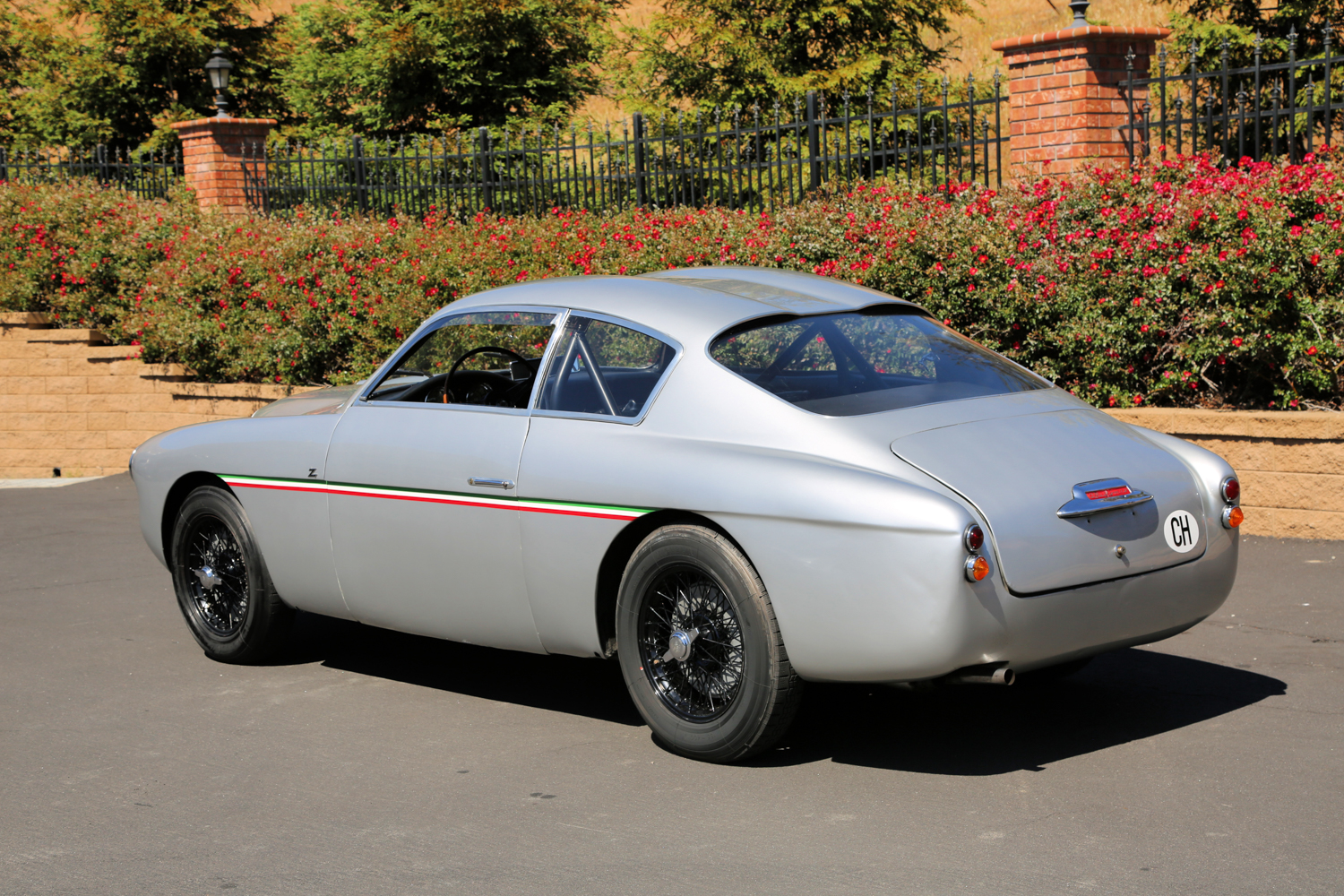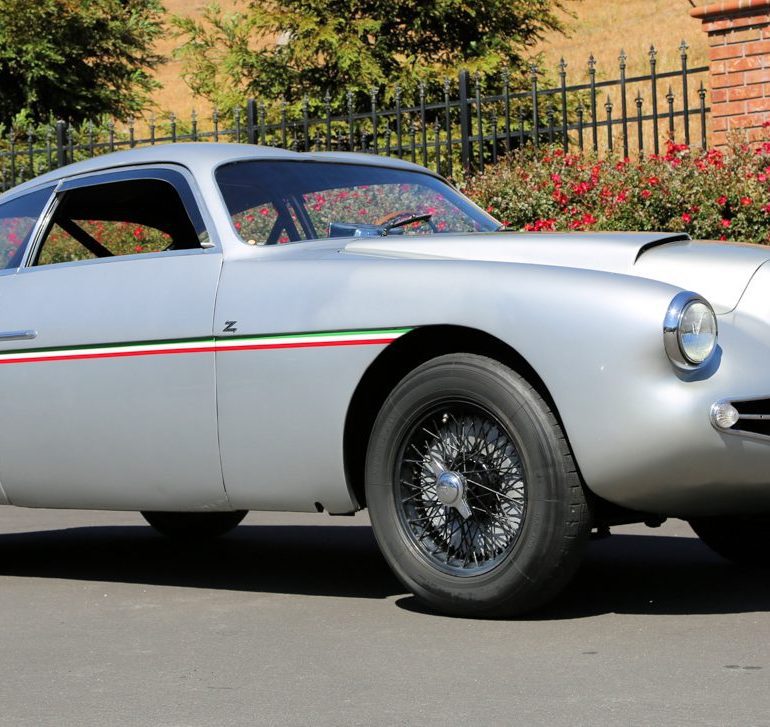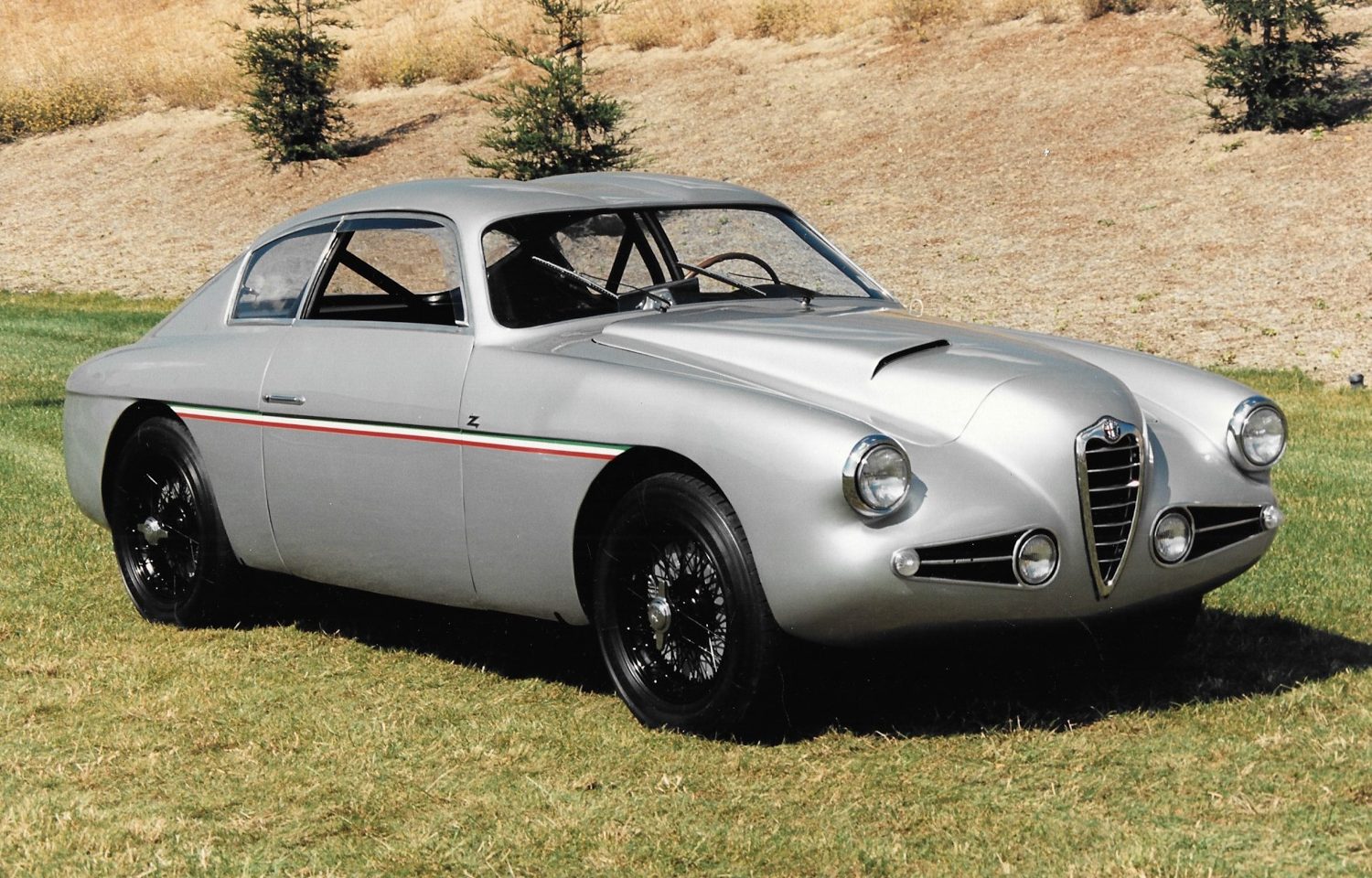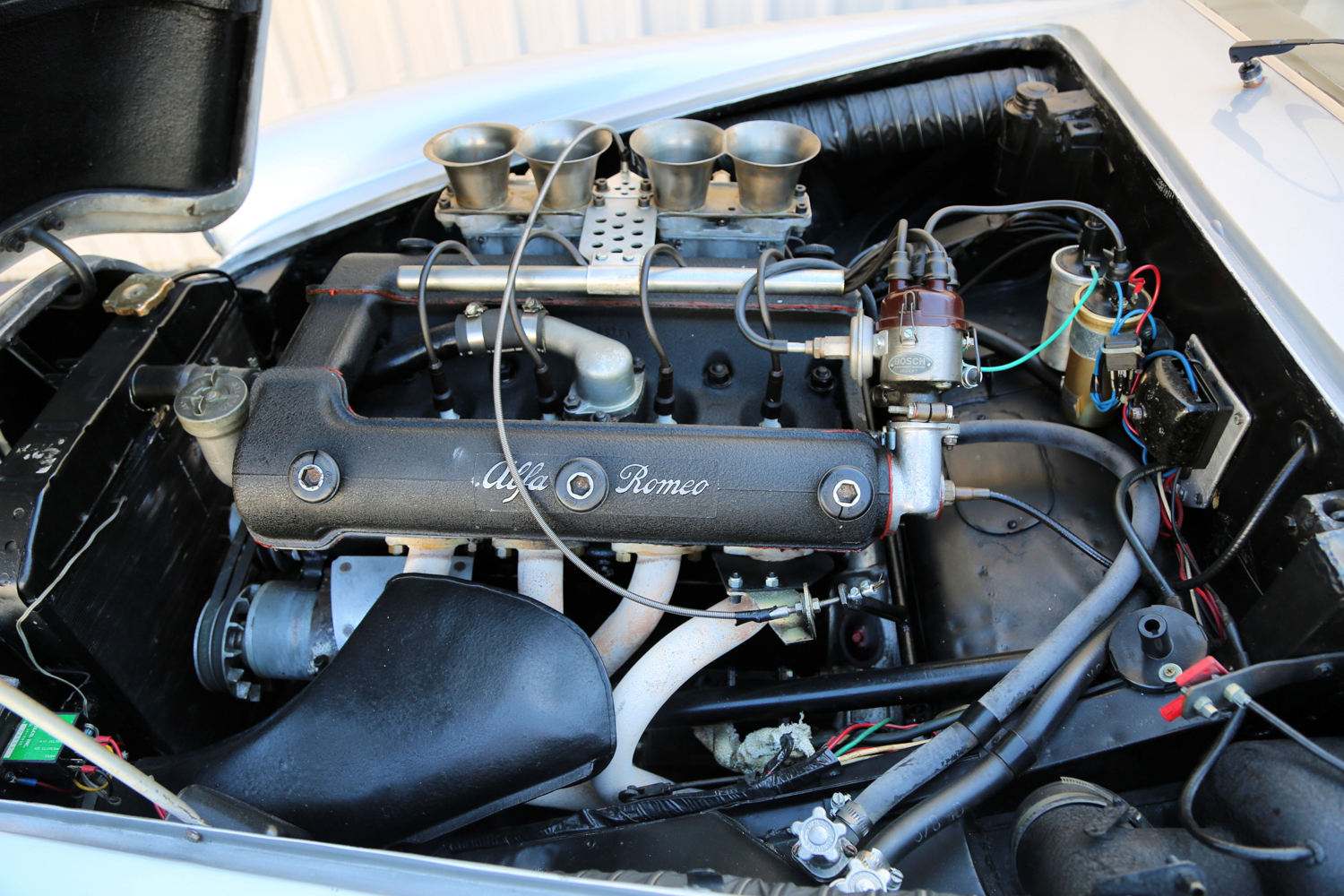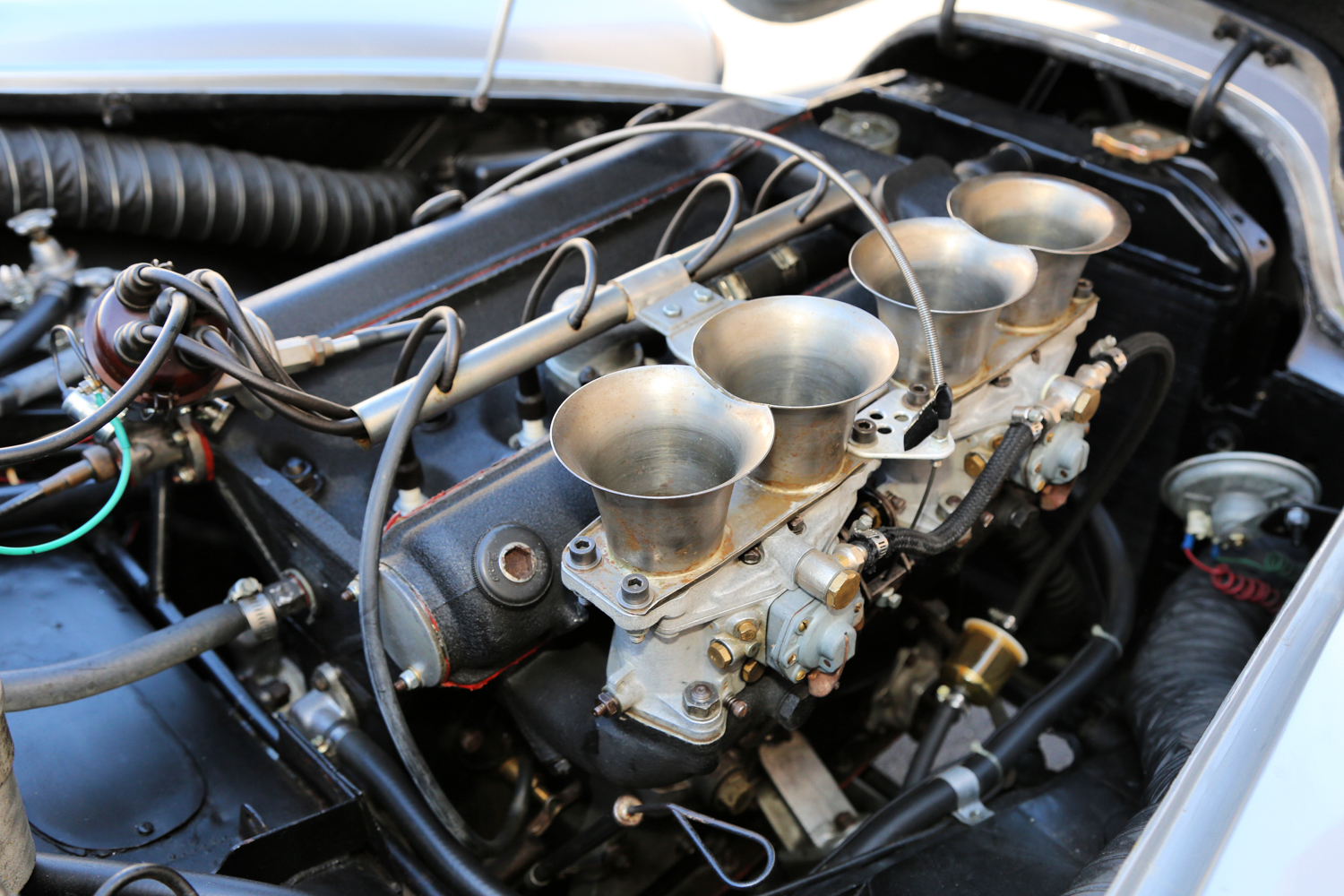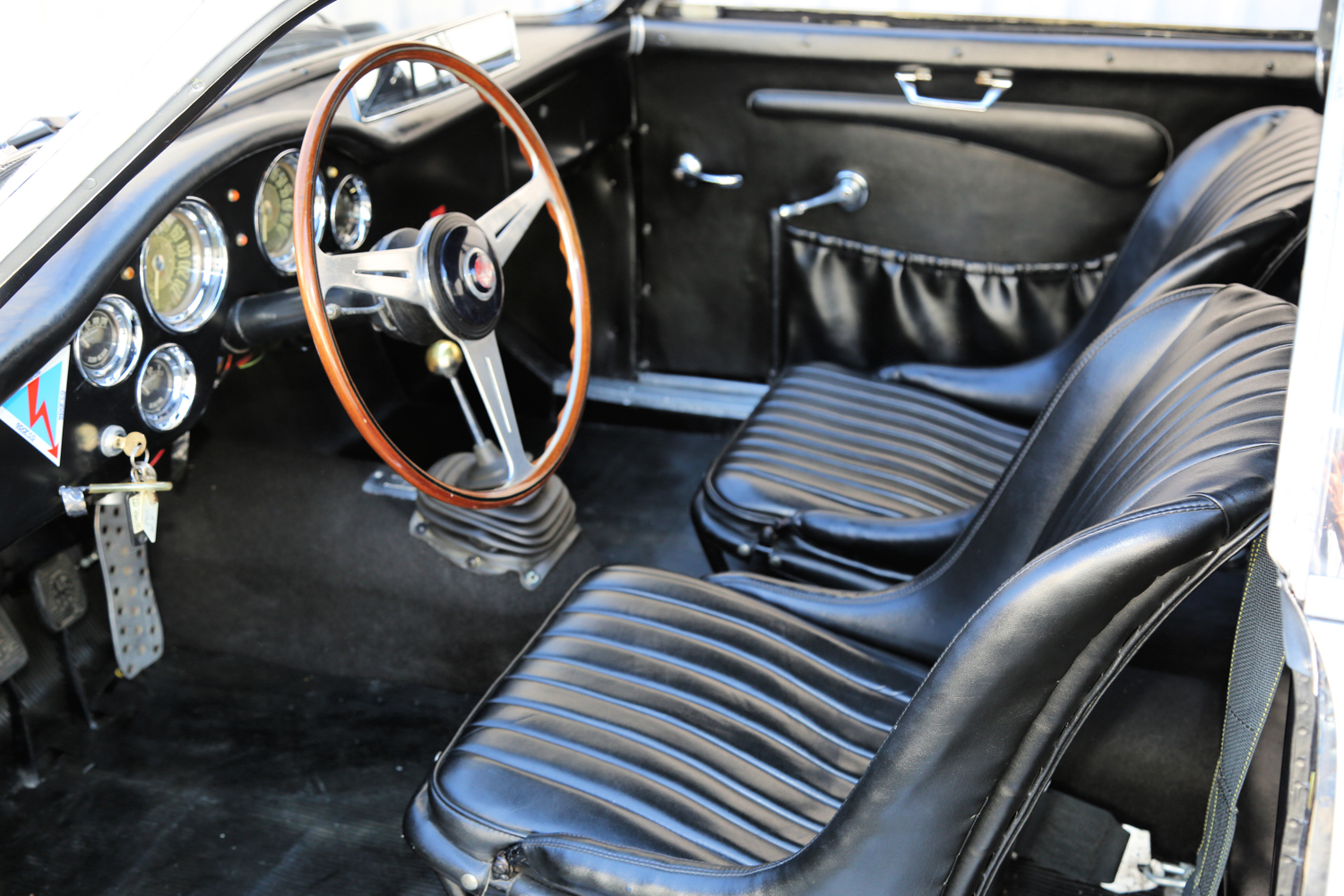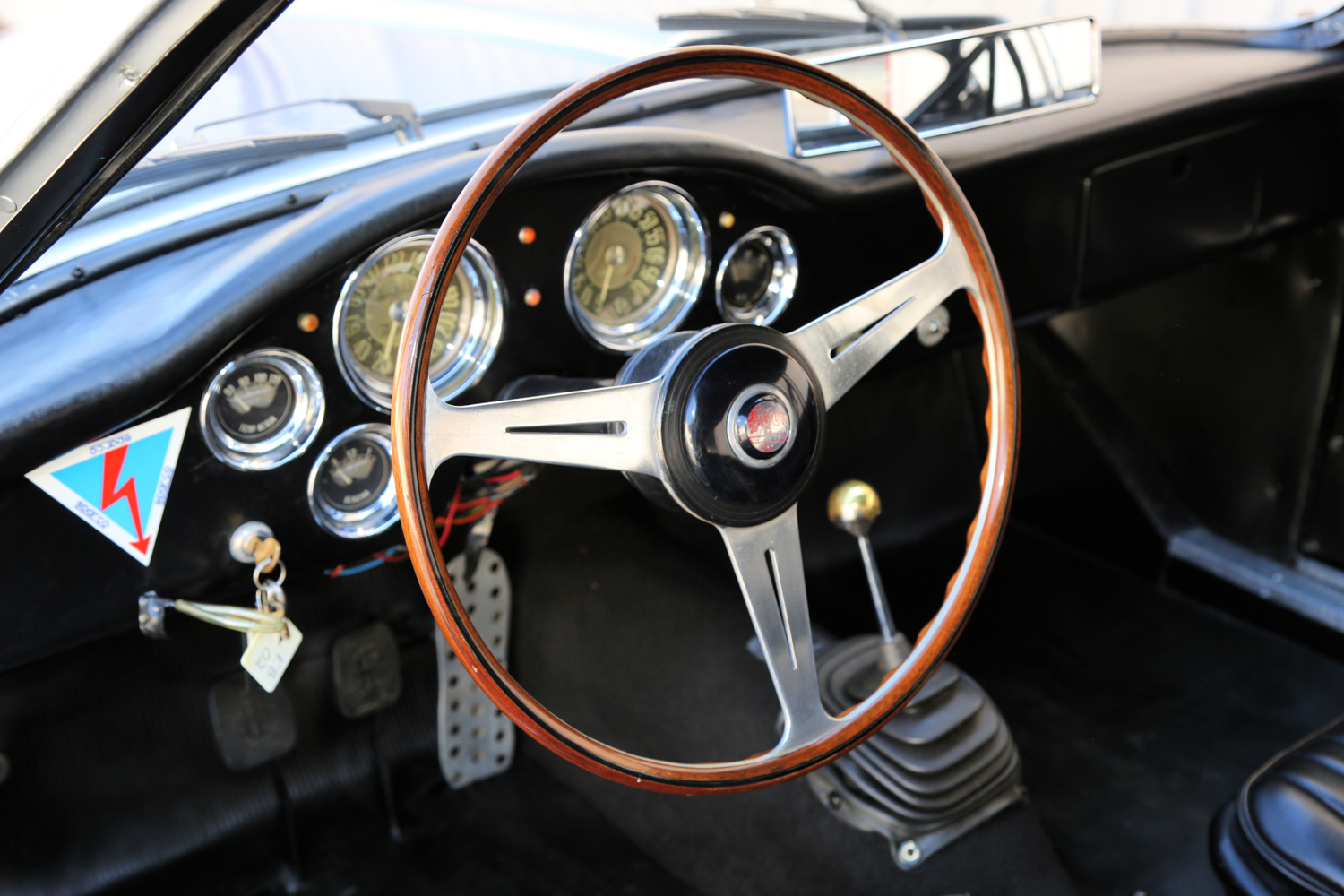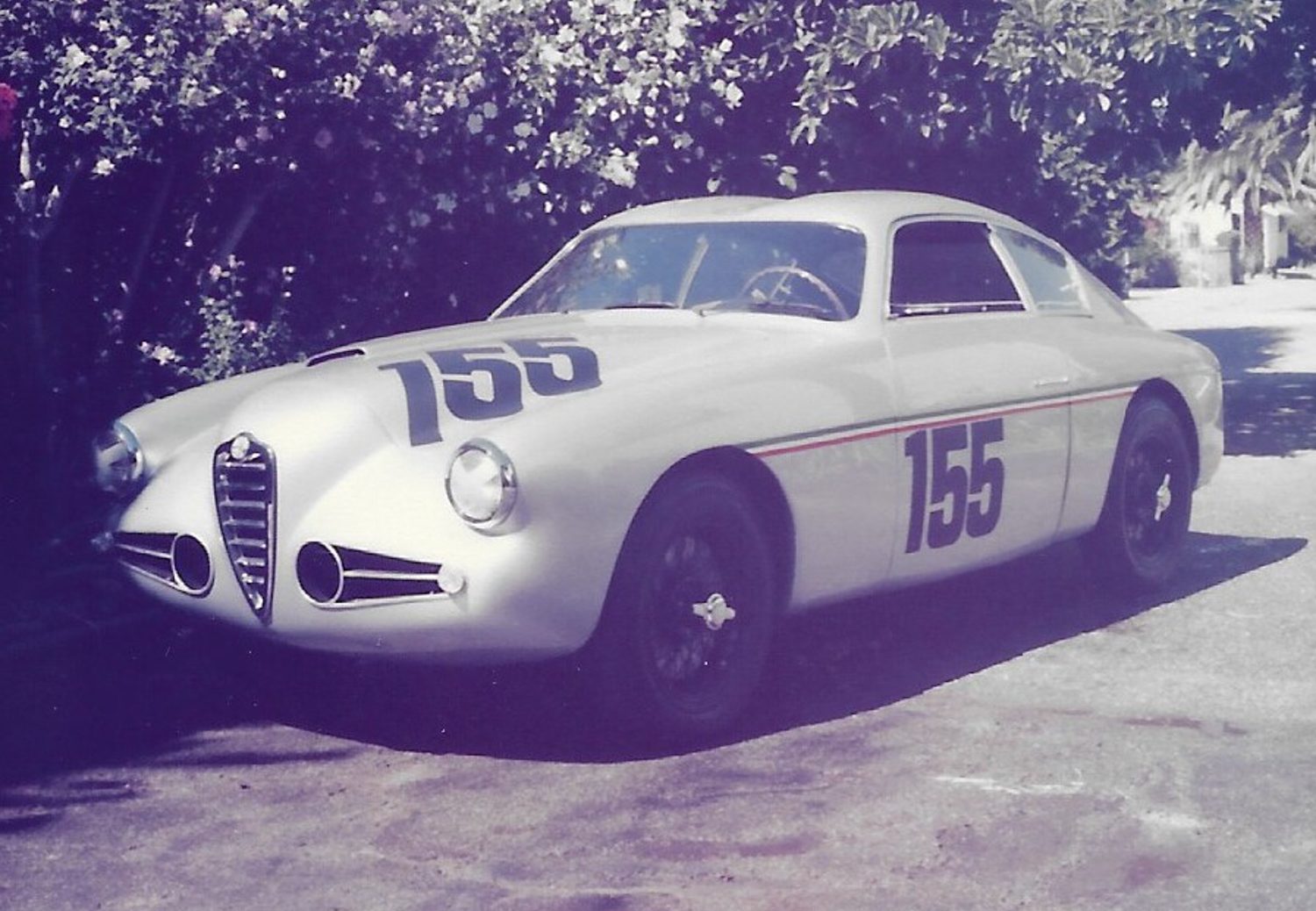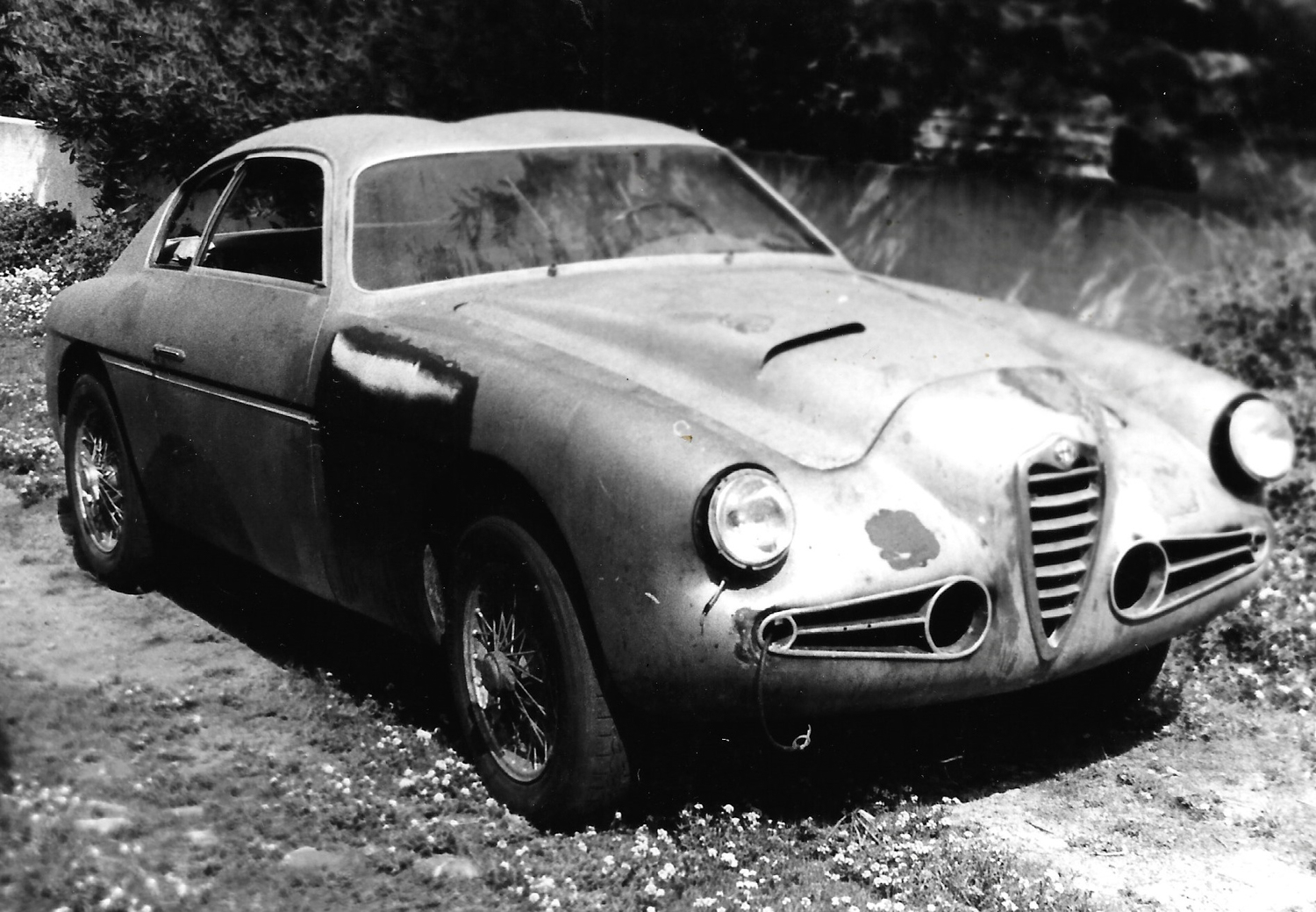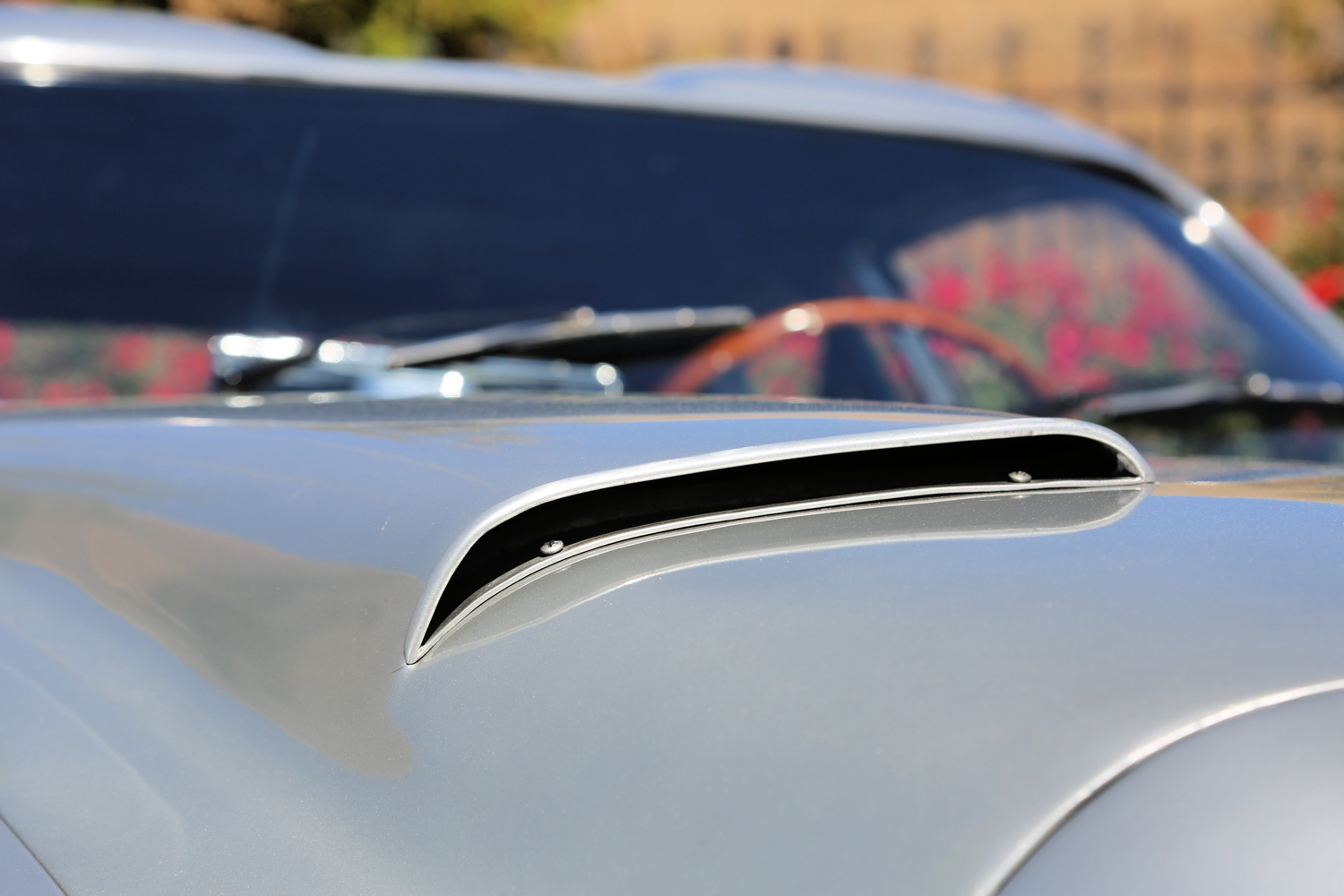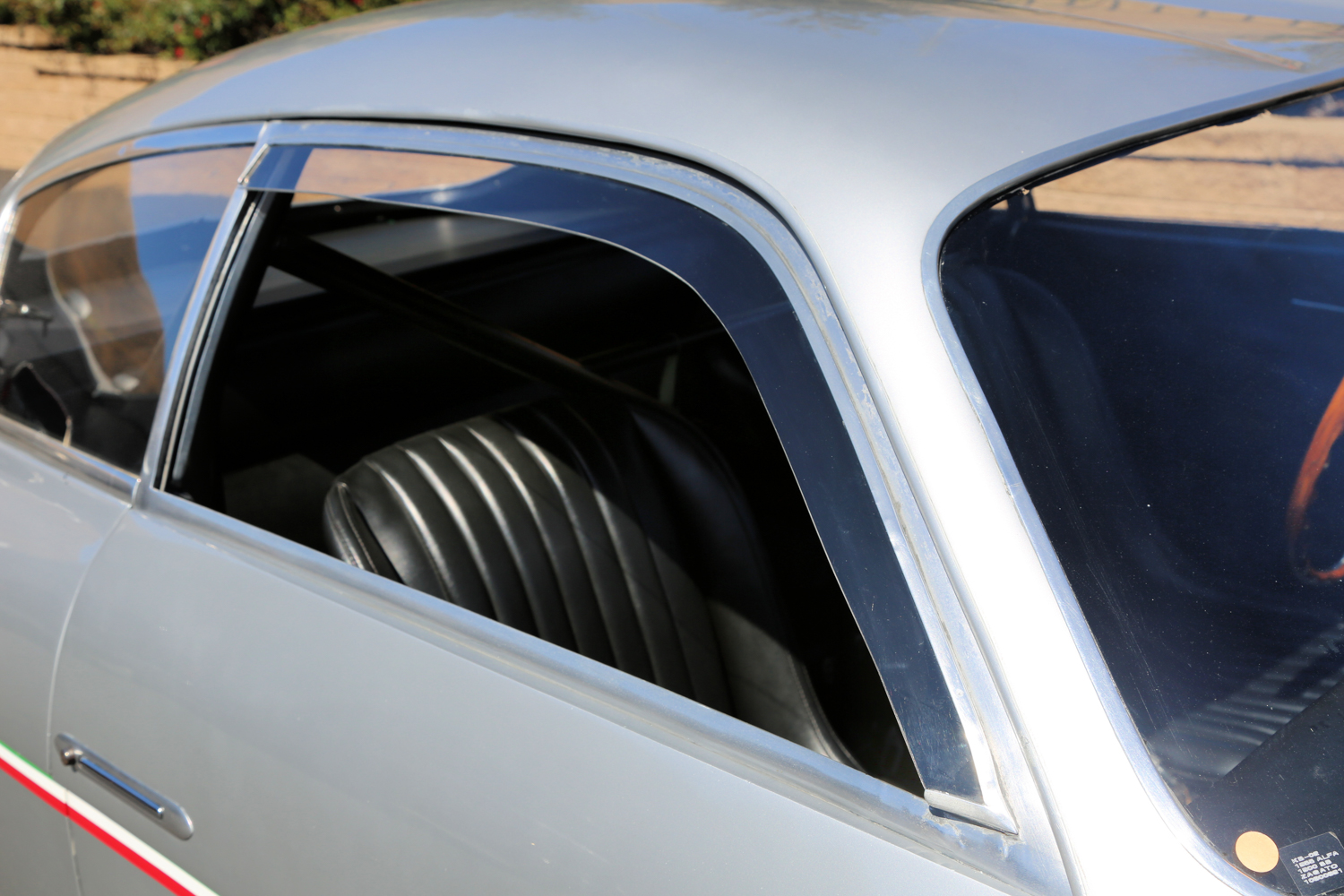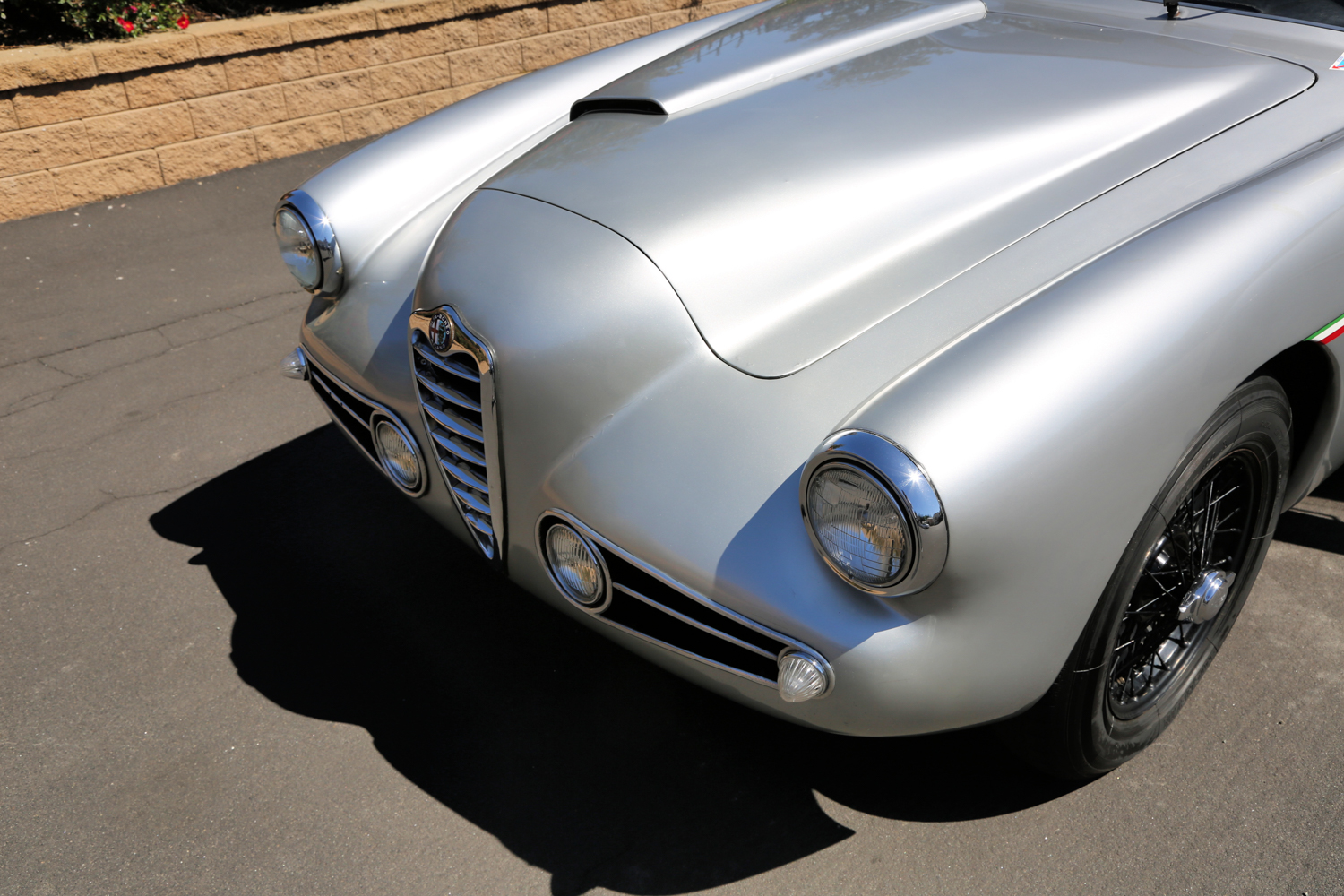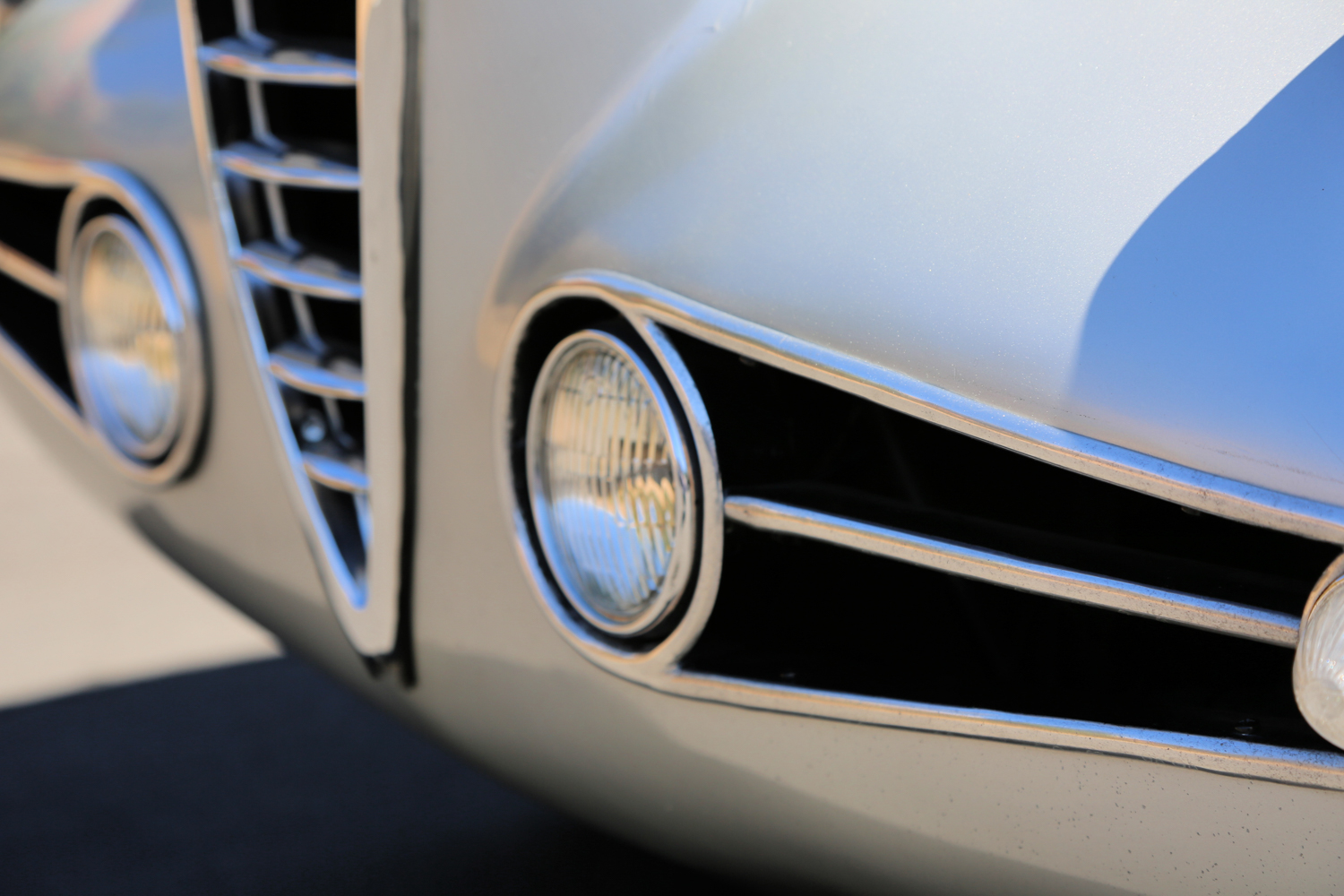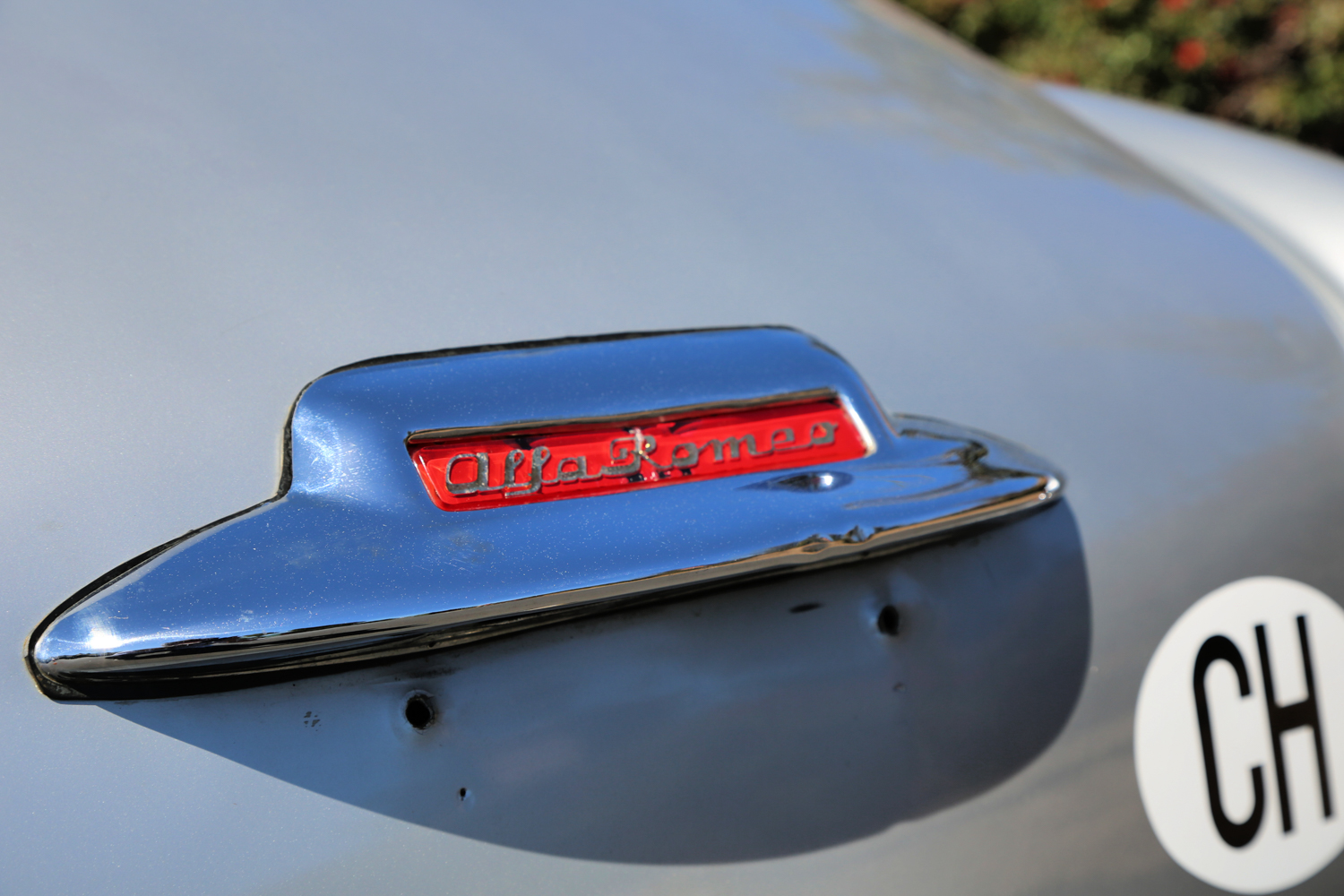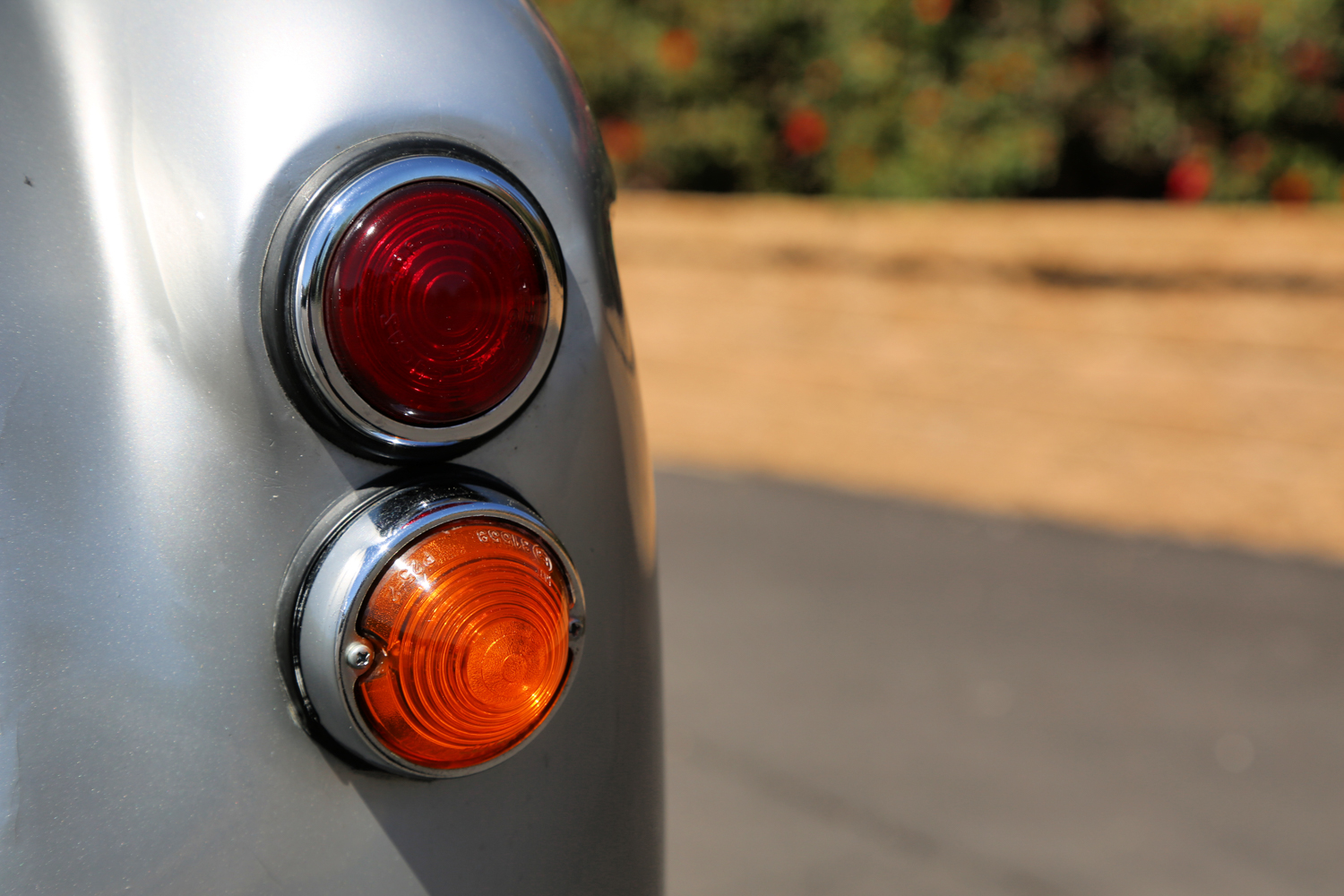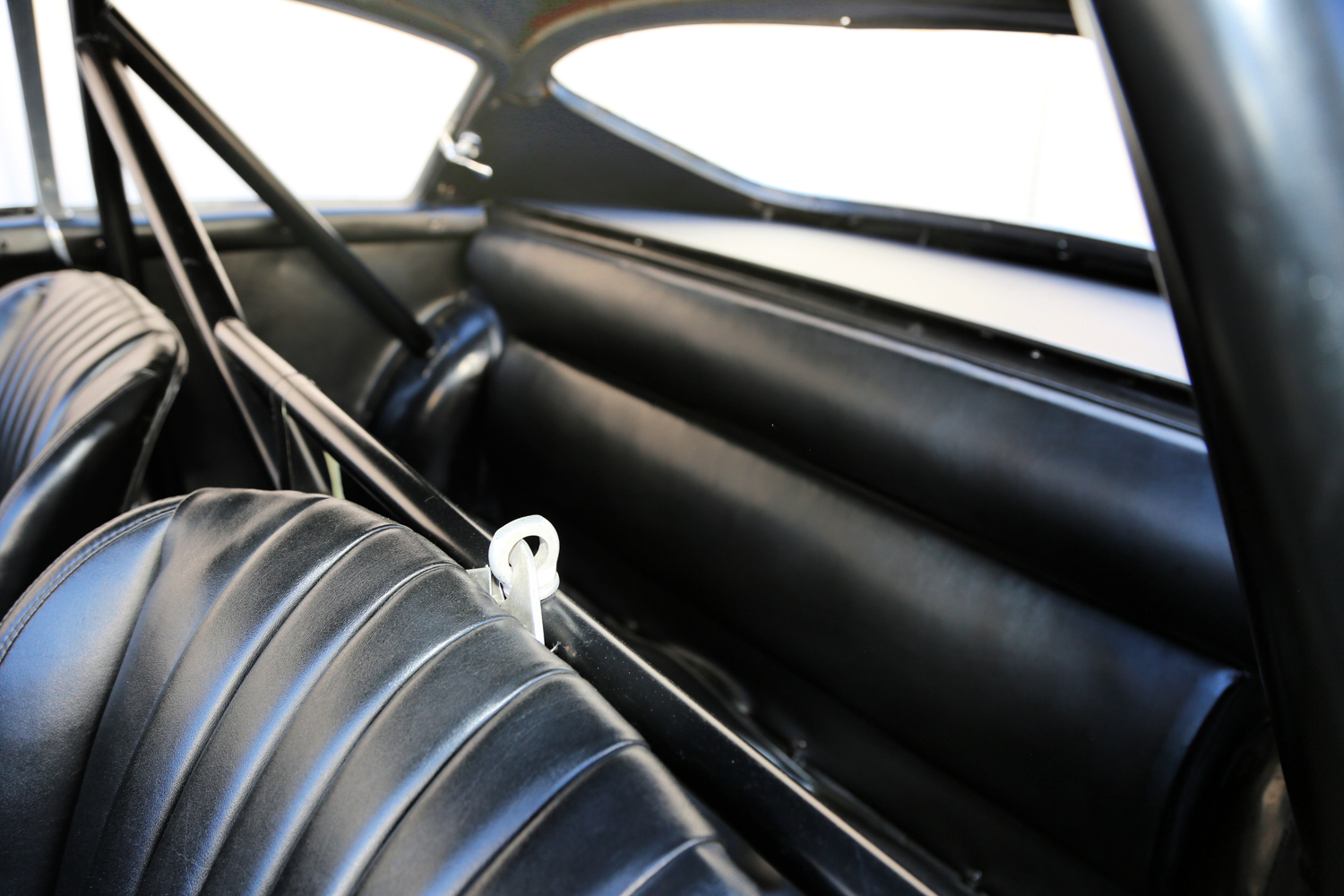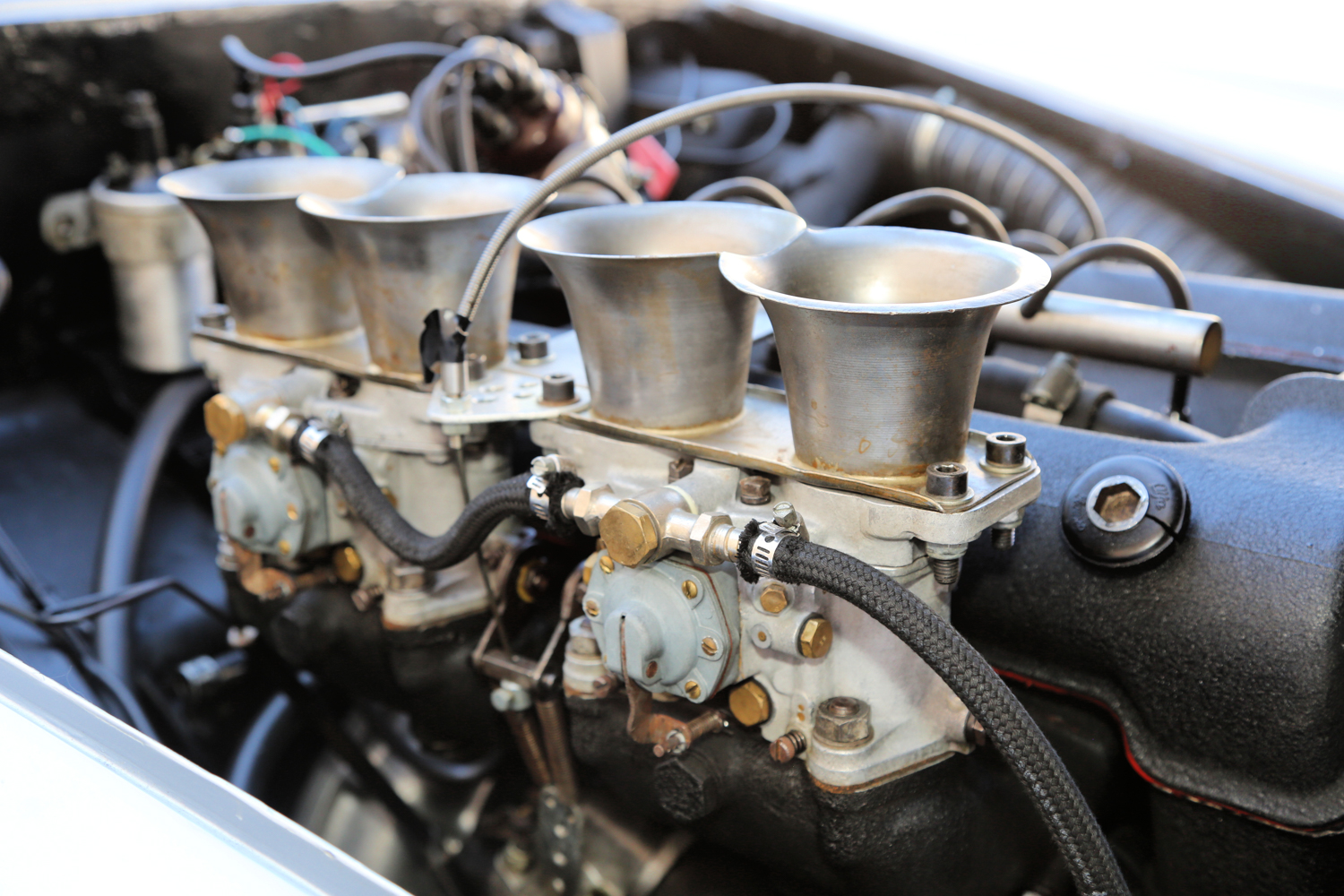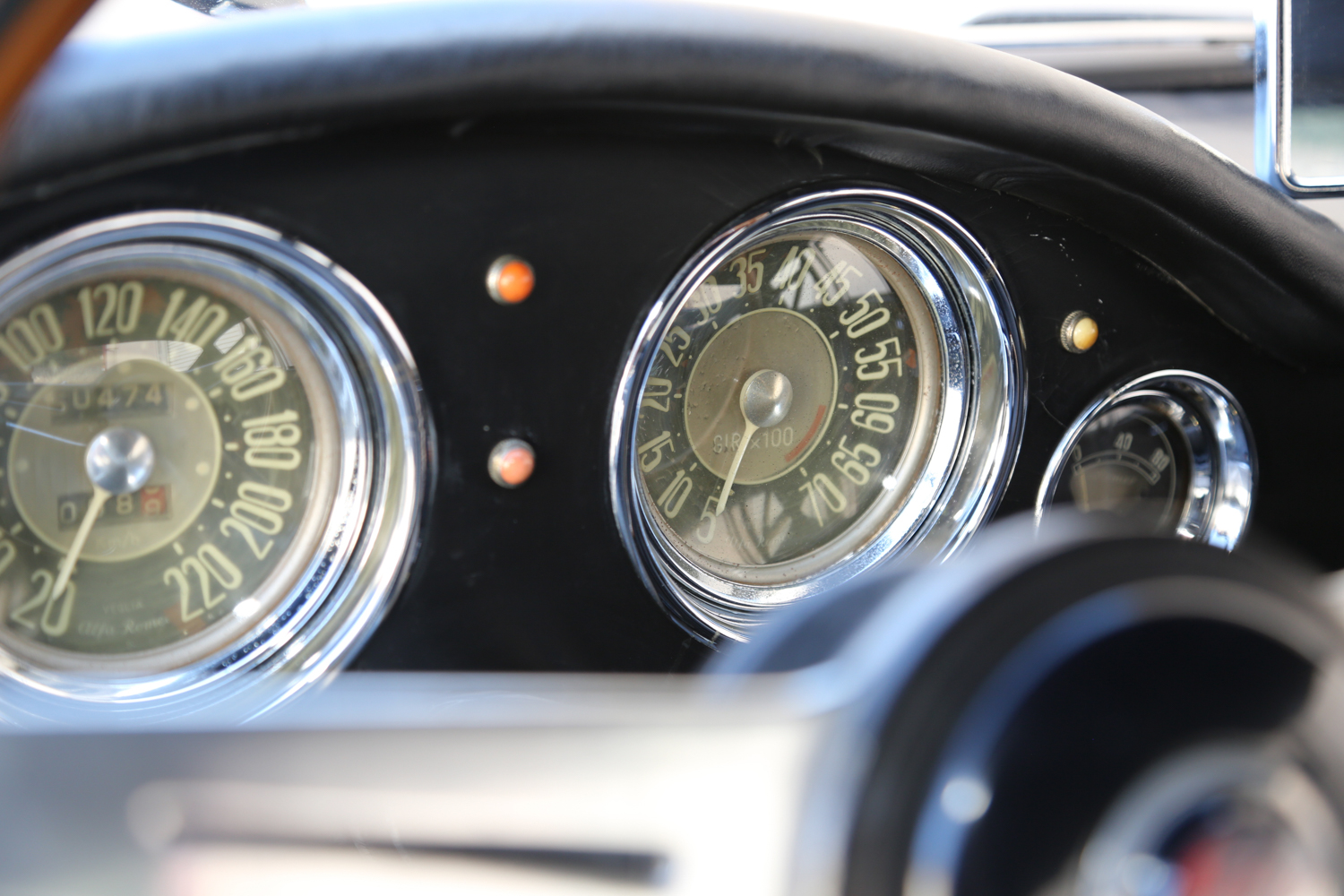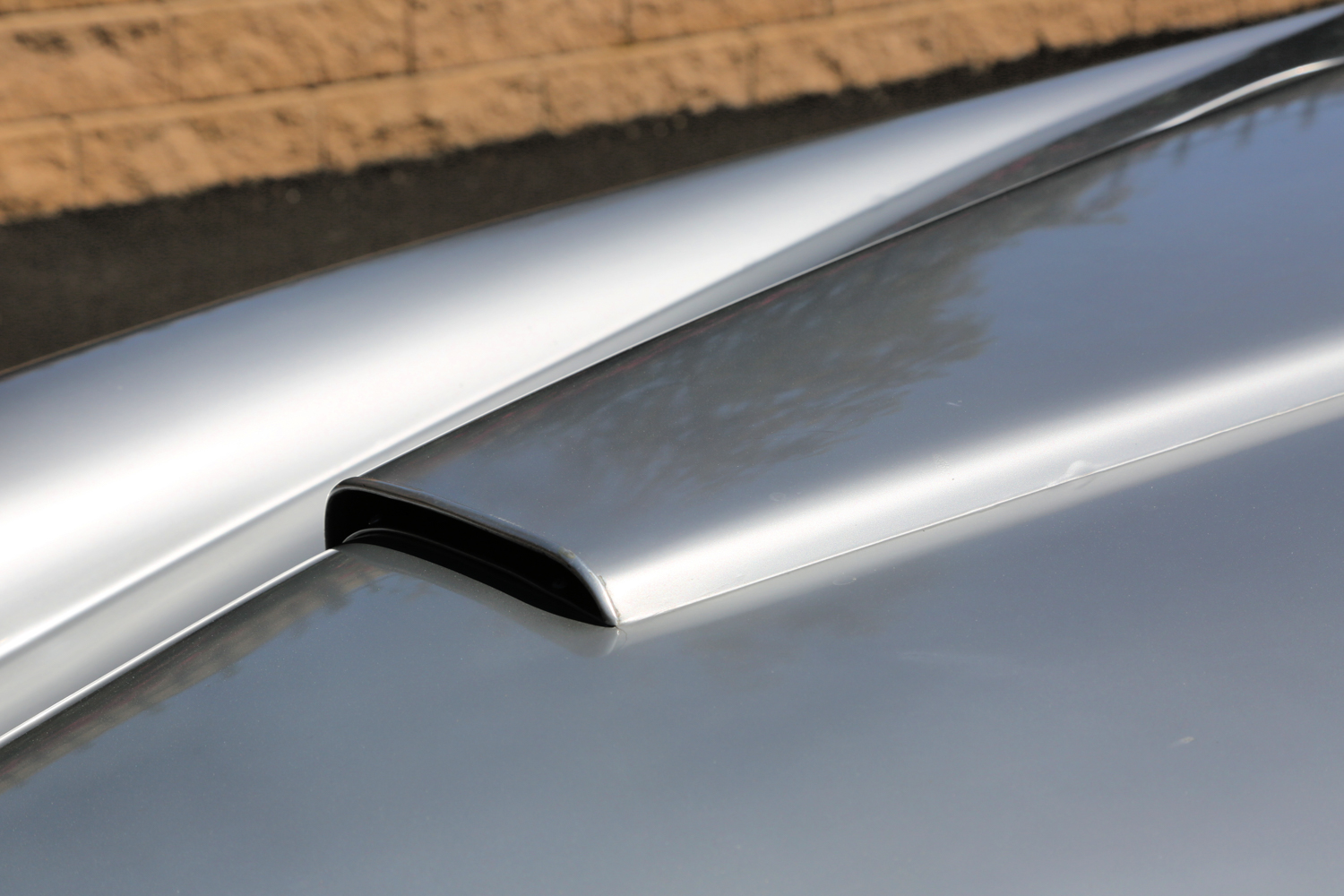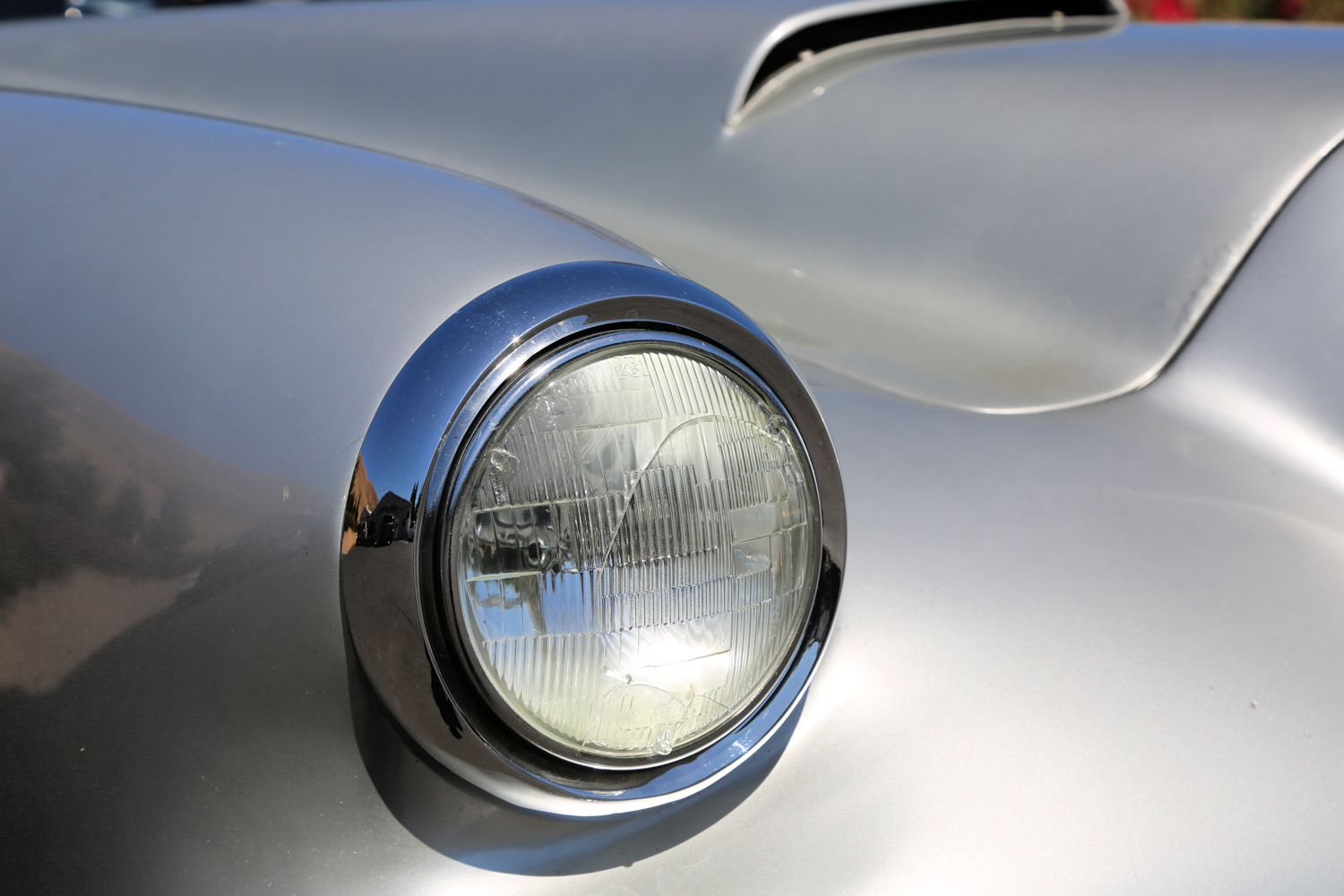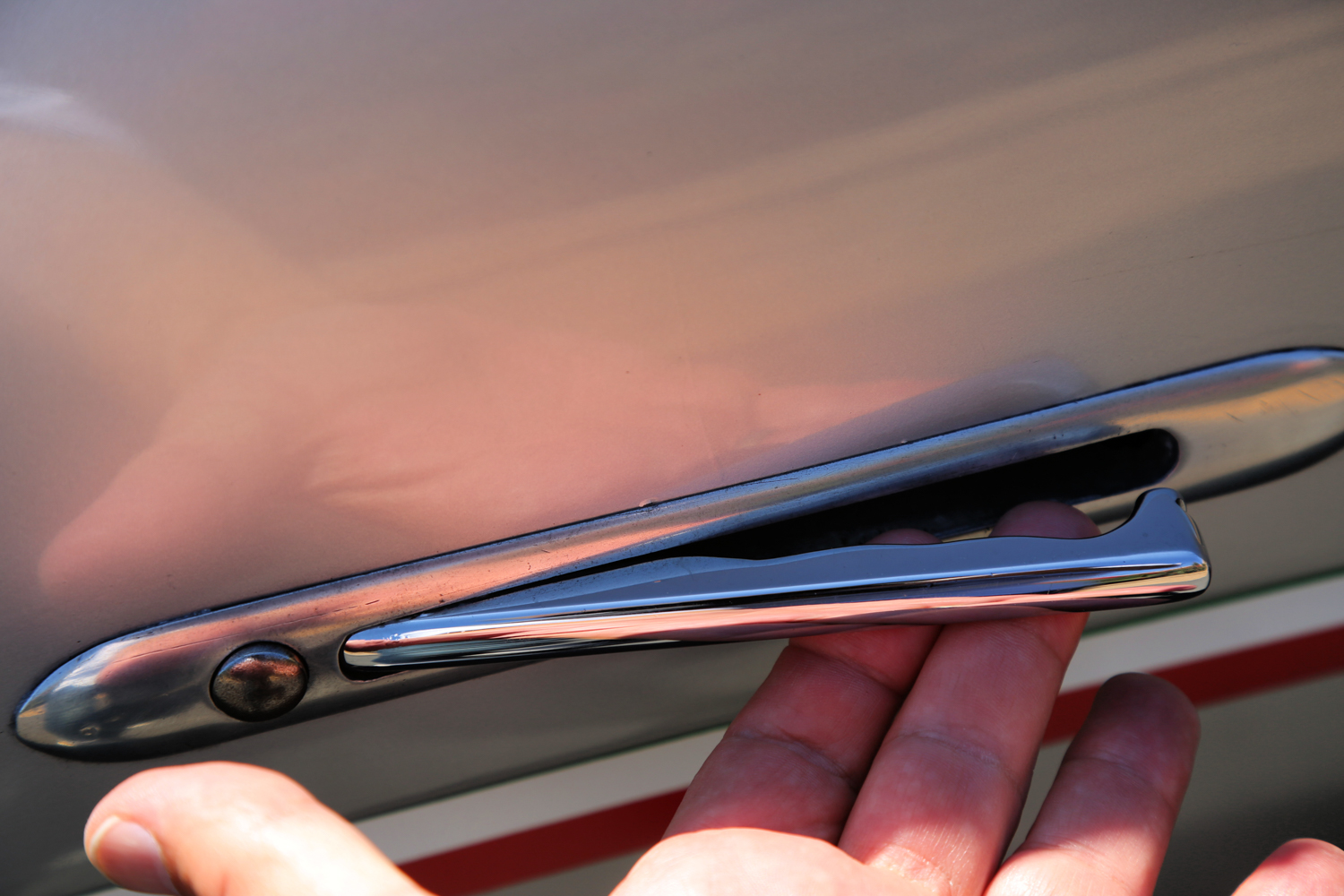On the Bubble
One of the most exciting relationships in sports car history is that of Alfa Romeo and Zagato.
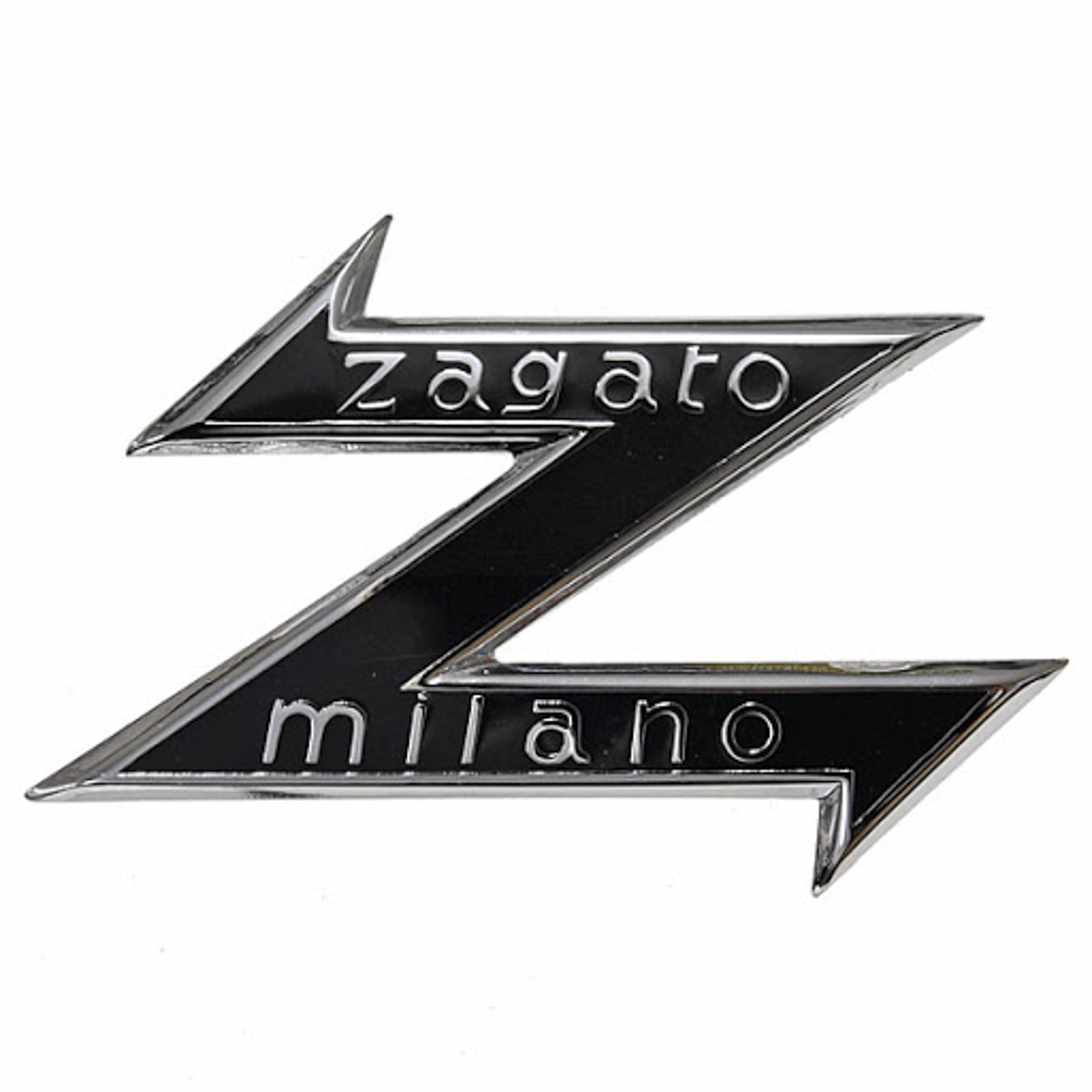
The 1900 Super Sprint was held in high regard by well-healed privateer racers and teams as one of the winningest cars in its class. Its road holding capabilities, speed and reliability qualities made it a successful model in its displacement class and was a popular choice for the Touring class as well as in the GT category. The 1900 SS competed in various speed and endurance races, often obtaining excellent results on the track and on the road both in Italy and abroad.
Design of the post-war Alfa Romeos was assigned to Orazio Satta. Satta implemented a systematic evaluation of vehicle dynamics directed at minimizing mass and wind resistance, as well as improvement to roadholding and handling characteristics. The result of Satta’s design philosophy and systematic refinement of design parameters resulted in the Alfa Romeo 1900.
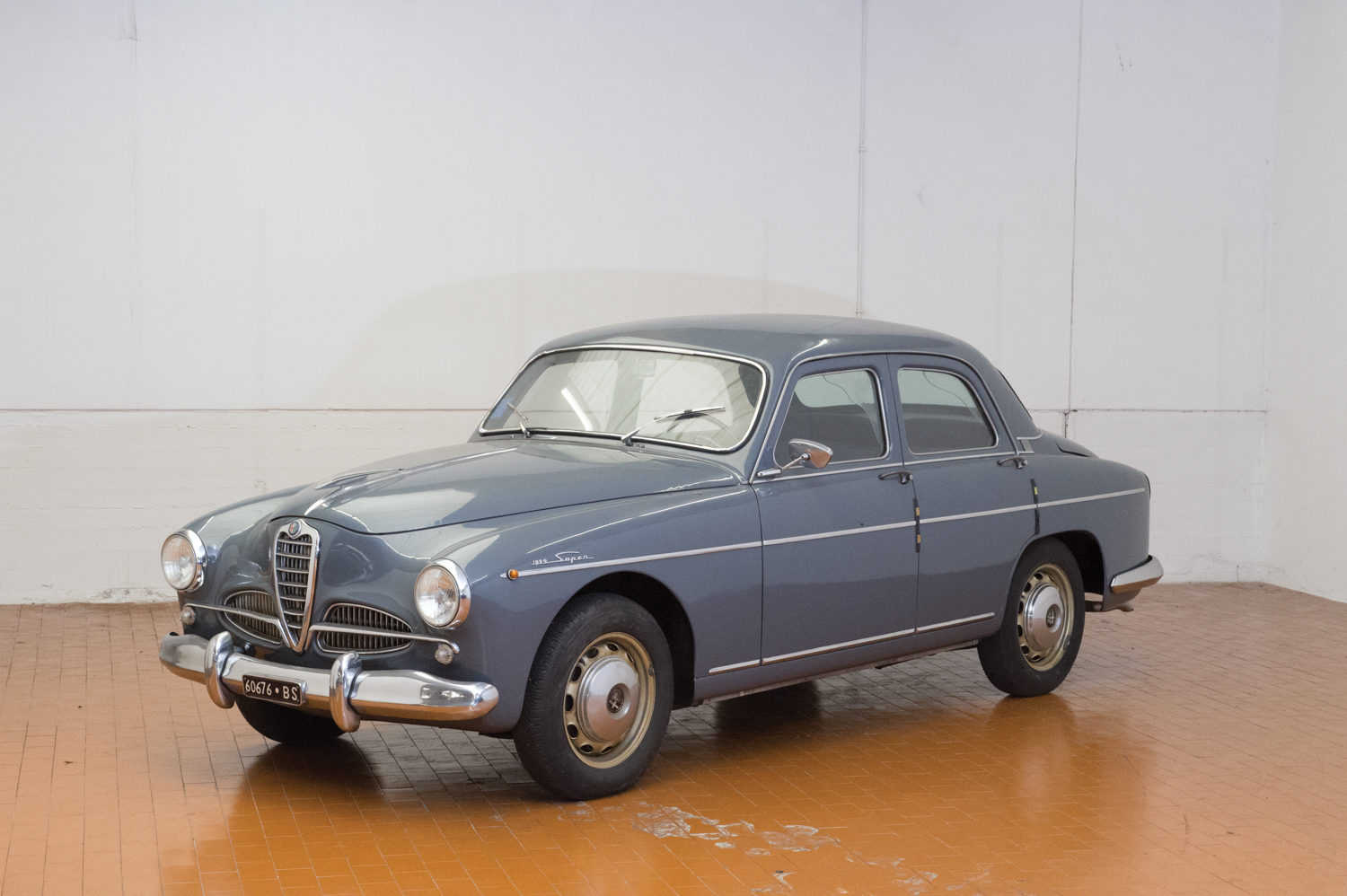
The 1900 was introduced, in late 1950, as a 4-door sedan. It had unit body construction which utilized a parallel A-arm front suspension system and a lightweight live rear axle with coil springs and tubular shocks. It was originally powered by a 1,884-cc iron block, aluminum head, dual overhead camshaft, four-cylinder engine making a conservative 80 horsepower when introduced. The Alfa Romeo 1900’s performance credentials were soon enhanced with the 100 horsepower 1900C, which Italian coachbuilders soon identified as the ideal platform for low production and individualized custom coupé and spider bodies. Further performance development brought the 1900 to its ultimate specification with 1,975-cc and 115 horsepower, the 1900 TI and 1900C SS (Super Sprint). Alfa marketing at the time promoted the 1900 as the “family car that wins races”.
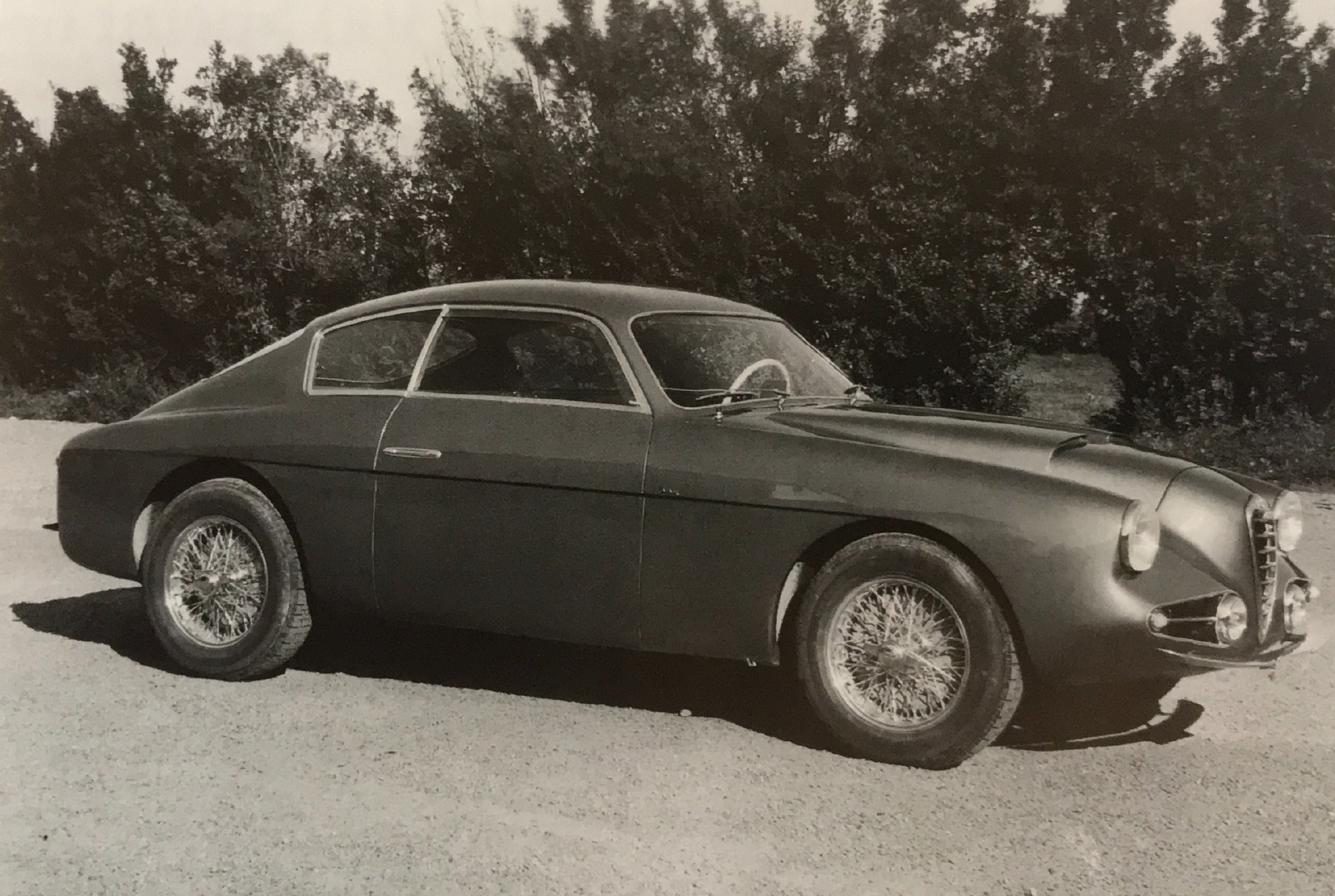
The 1900C SS matched the short chassis with a lively racing-specification engine, gearbox and revised final-drive ratios — plus air-cooled “Alfin” self-adjusting brakes. An excellent 5-speed manual gearbox featured synchronized second, third and fourth gears, with carefully selected ratios matching the power curve of the twin-cam Tipo 1308 engine. The 1900 models achieved great competition success, especially the 1900C SS, with racing credentials earned at the major races and rallies of the era, including the Targa Florio, Stella Alpina and Mille Miglia.
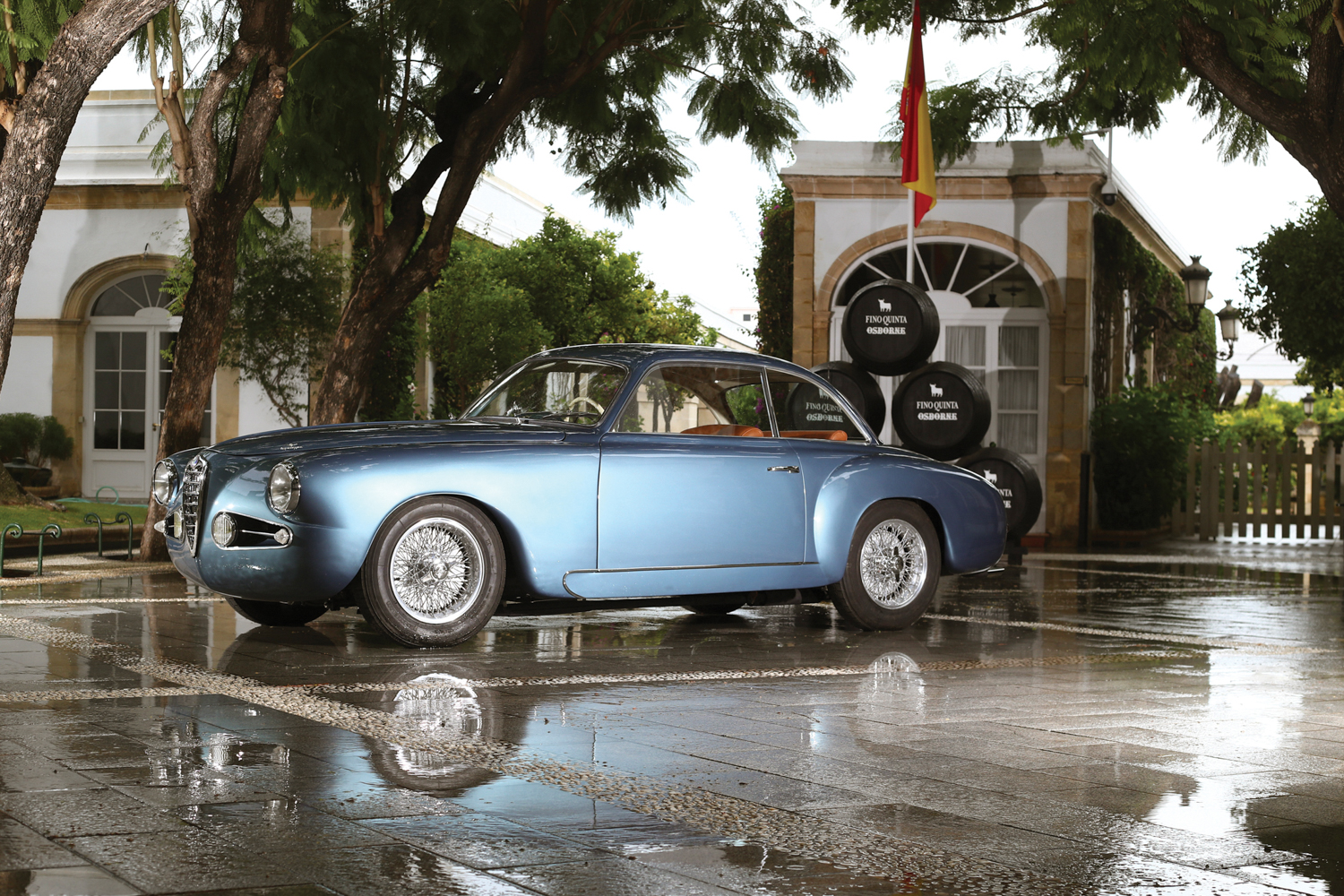
There were over 21,000 1900-series cars produced in many variations, however, only 854 were made in the ultimate specification, 1900C SS. From its debut, the 1900 was favored by Italy’s finest custom coach builders, including Touring, Ghia and Vignale. The cars crafted by Zagato featured ultra-lightweight alloy panel work, yielding even greater performance.
The Double Bubble
A plethora of talented Italian coachbuilders, or carrozzeria, existed during the period between World War I and the 1970s. Among some of the most well-known, were those originating from Turin, including Bertone, founded in 1912, Pininfarina in 1930 and Vignale in 1948. Based in Milan were Touring, which started in 1926 and, of course, Zagato that began in 1919. All of these coachbuilders created exceptional automotive works of art, however it was Zagato that established a singular design element that has been used for more than 60 years, the famous “double bubble” roof.
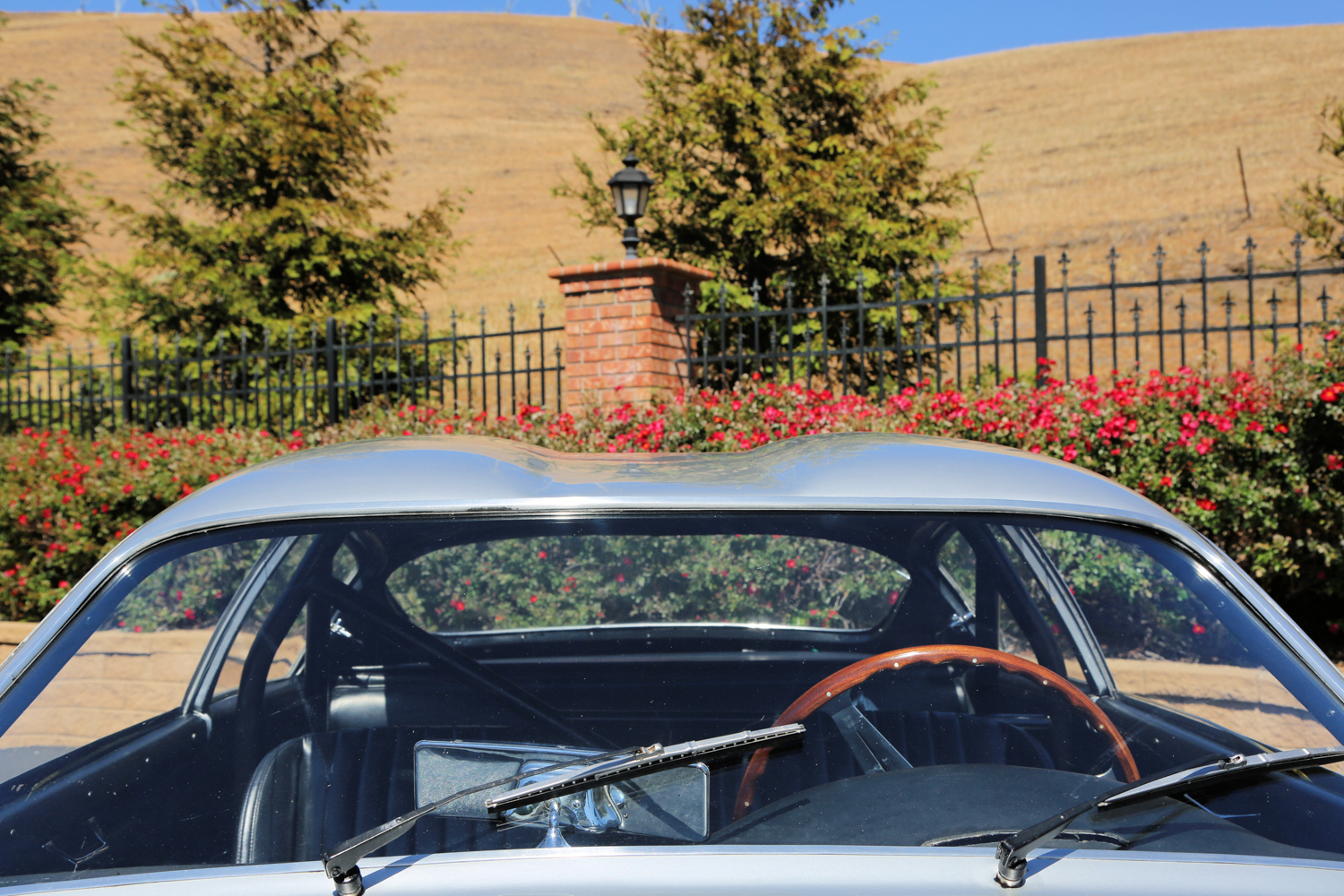
Zagato founder and namesake Ugo Zagato built his firm’s excellent reputation in the 1920s and 1930s by using high-strength, lightweight building techniques, often forming body panels in aluminum, a process he had learned during four years of working at Officine Aeronautiche Pomilio, an aircraft construction company. A great deal of racing wins and commercial successes were accredited to the sleek aerodynamic aluminum-bodies worn not only by Alfa Romeos, but also those of Ferraris, Fiats, Lancias and Maseratis, making Zagato one of Italy’s most prestigious sporting coachbuilders.
Shortly after the end of World War II, Ugo Zagato revealed a new design concept called “Panoramica,” that featured a tall, streamlined roof inset with extra-large, compound-curved windows. This basic body design was patented in 1948 and applied to many cars through the early 1950s.
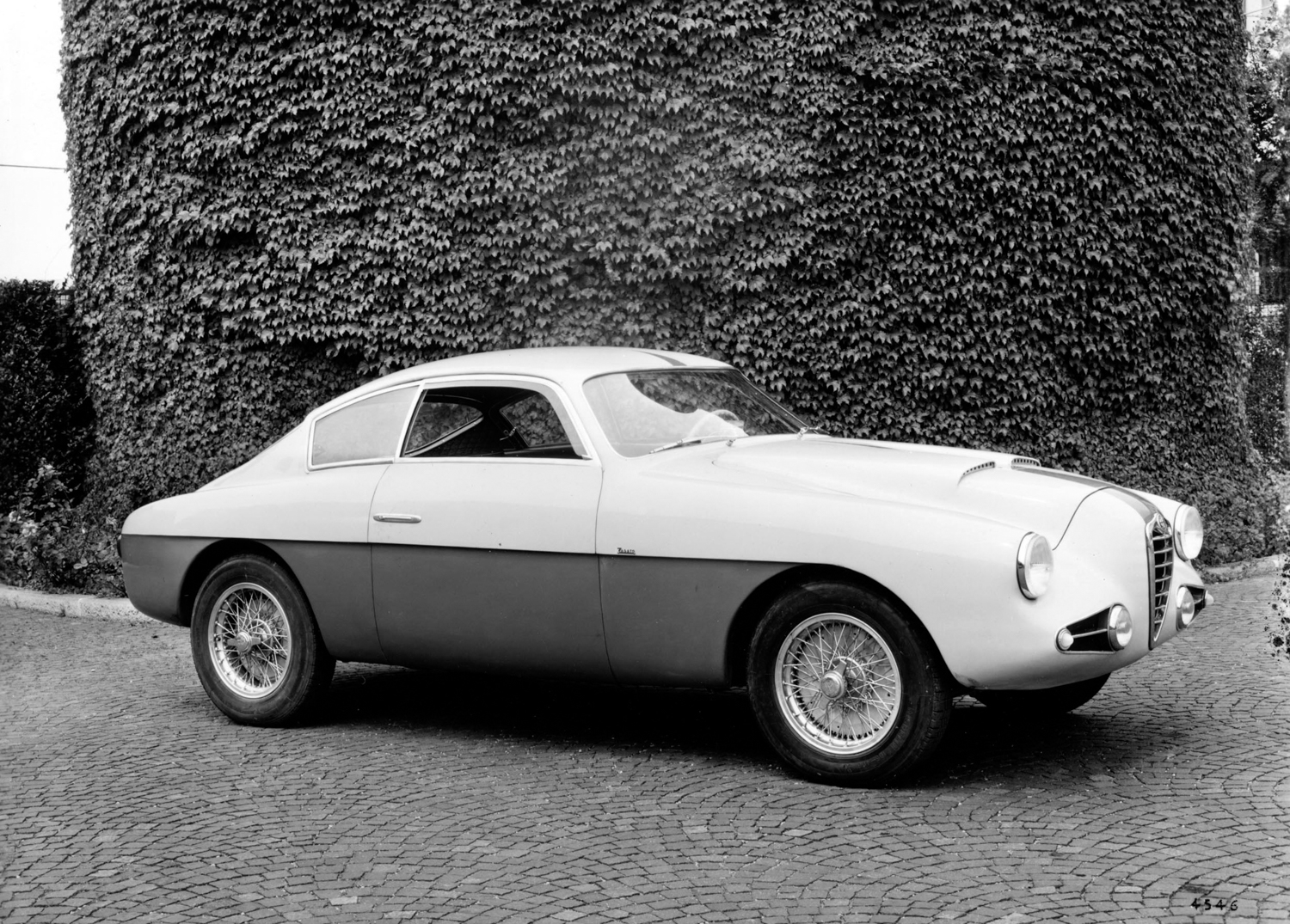
Zagato conceived another concept around that same time which was also based in aerodynamic engineering studies and designed to gain an advantage on the race track. Reducing frontal area and overall height lowers wind resistance, so Zagato compromised between having a small frontal area and providing a reasonable amount of driver and passenger comfort (and headroom for a racing helmet), by blistering an otherwise low roofline with a bulge over each seat. Another benefit of this design was added strength to the thin aluminum roof panel.
The “double bubble”, as this roof treatment became known, was first seen on some of the later 1952-1955 Fiat 8V Competiziones that Zagato bodied, and it was subsequently used on privately commissioned one-offs such as the beautiful 1954 Maserati A6G/54 2000 Zagato Coupe and 1957 AC Ace Bristol Zagato Coupe. Several Ferraris were also the basis for a few double bubble Zagato coupes, including three long-wheelbase 1956 250 GTs. Some more moderately priced cars also received the double bubble roofline treatment in this era, such as the Lancia Appia Gran Turismo Zagato and the Alfa Romeo 1900 C Super Sprint Zagato featured here.
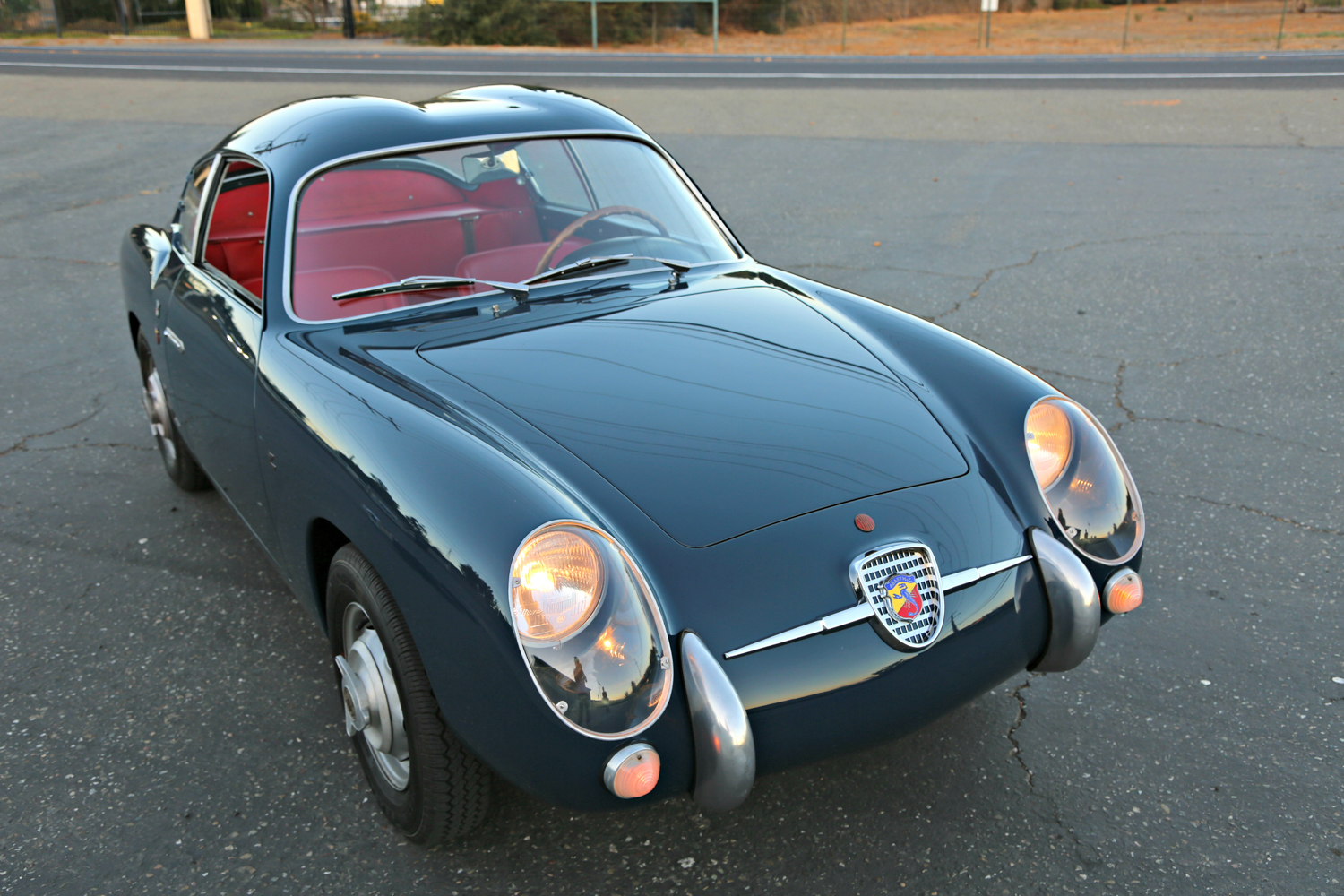
The most common, well known and considered by many the most dramatic use of this design, appeared on the aluminum-bodied 1956 Fiat 600-based Abarth 750 GT Zagato. In addition to the famous roof bubbles, which enabled the roofline of the standard coupe to be radically lowered, this demi-fastback also featured matching, forward-facing air scoops on the rear engine lid. It is believed that Zagato may have created more than 300 double bubble 750 GTs through the late 1950s.
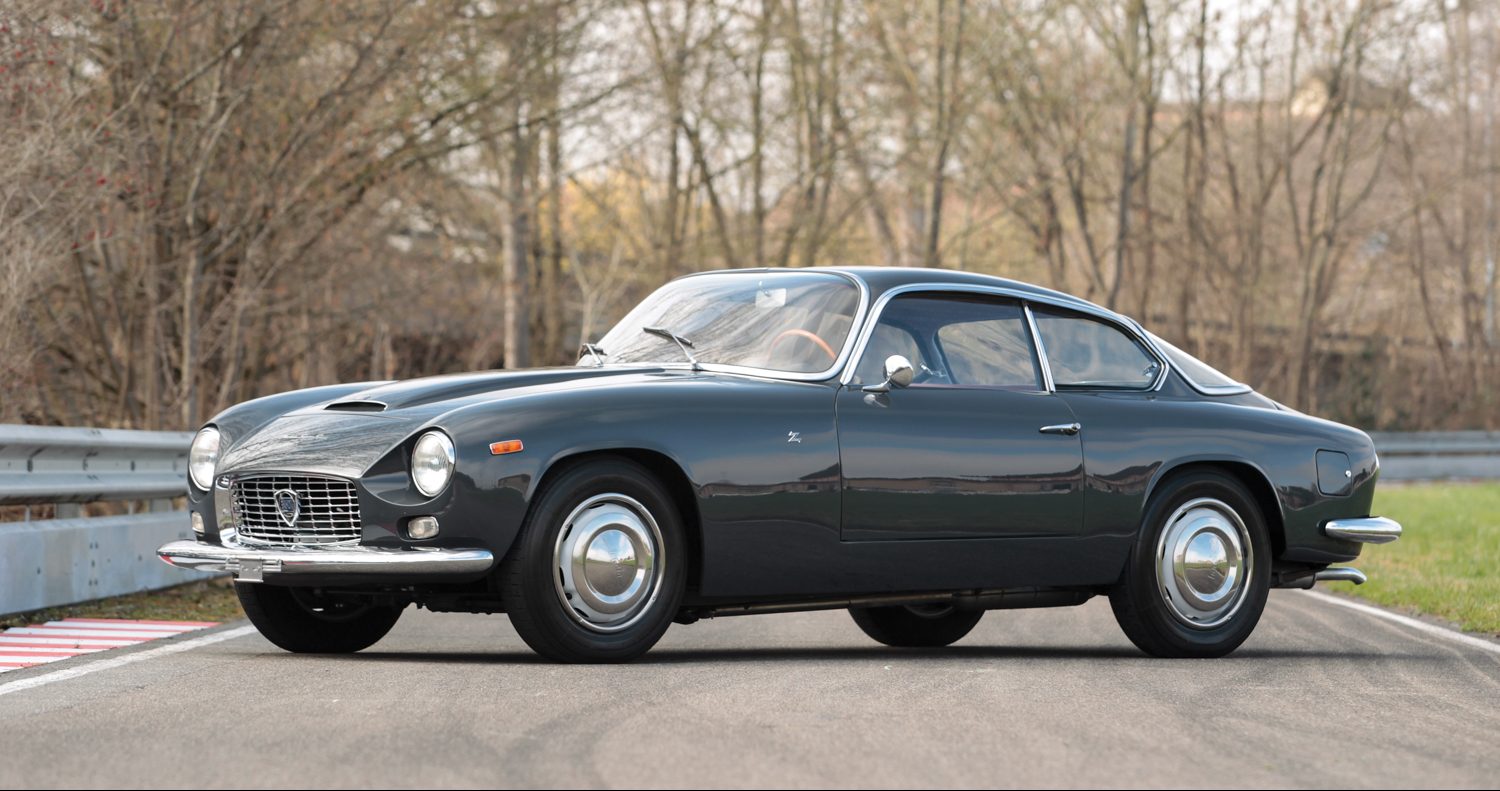
One of the most cherished production car double-bubble Zagatos is the aluminum-bodied 1964-1967 Lancia Flaminia 3C 2.8 Super Sport which rode on a shortened Flaminia Coupe platform and was powered by a 152 hp, 2.8-liter V-6 engine, of which 150 were produced.
It is true that Touring and Pininfarina also created gorgeous coupés and cabriolets for Alfa Romeo, but the ultimate Alfa Romeo 1900C SSs were the few and exclusive Zagato cars. Intended for racing, only 39 “esse esse zetas” were built. Their aerodynamic efficiency and light weight extracted the maximum from Alfa’s 1900 design. The 1955 Alfa Romeo 1900C Super Sprint Zagato Competition Berlinetta has been described as one of the finest examples of this exclusive high-performance Alfa Romeo in existence.
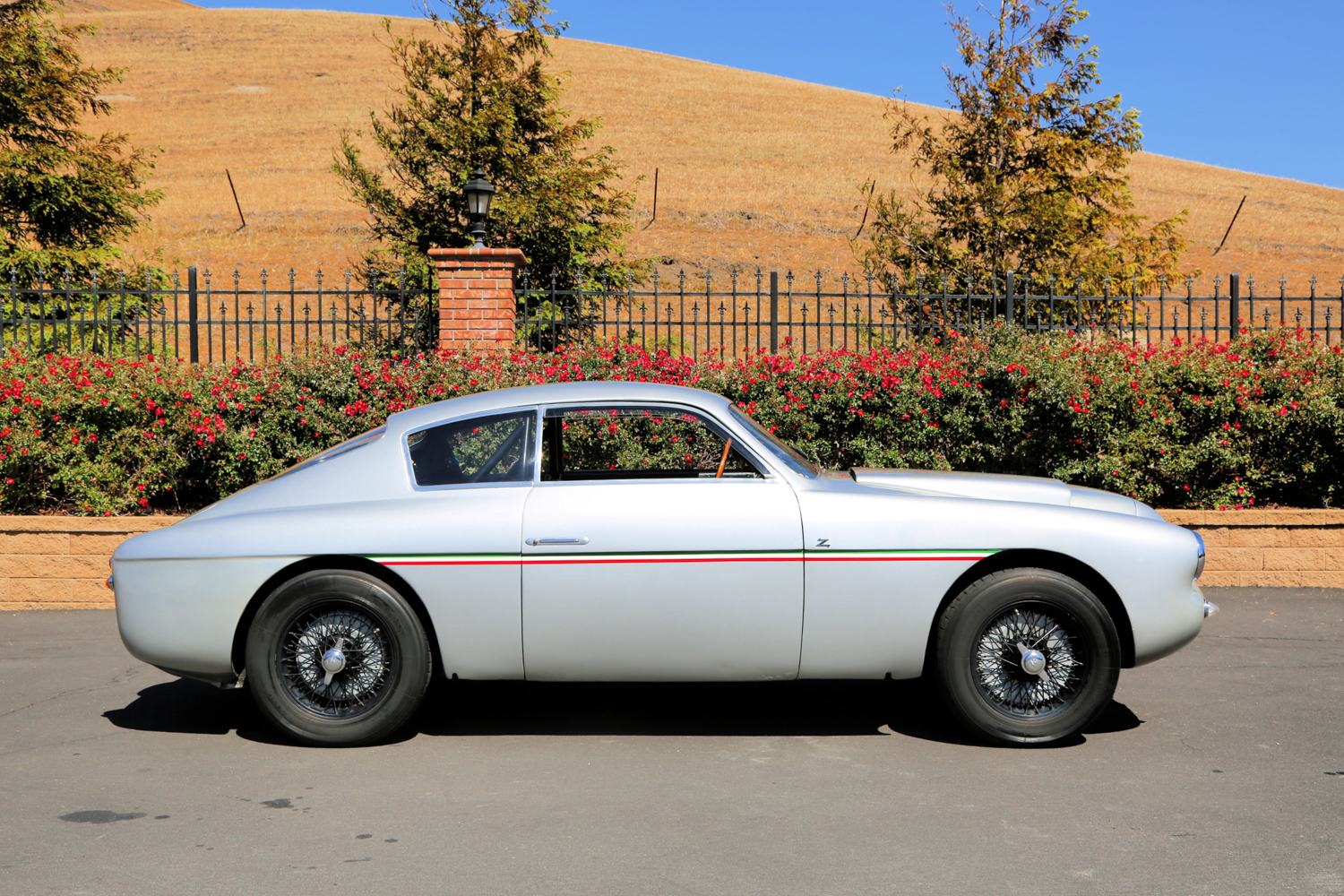
Elio Zagato was a great racing enthusiast and was eager to provide his design touches to Alfa Romeo’s sporting 1900C platform. In September 1954, he acquired a 1900C chassis and fitted it with lightweight aluminum coachwork that has since become regarded as one the most beautiful of Zagato’s many designs. The new body featured a sculpted nose and bulged hood with single or dual inlets designed to clear the carburetors.
Zagato let this 1900C be tested by Vladimiro Galluzzi, a driver from his Sant Ambroeus racing team. Based on his testing, Alfa Romeo experimental department director Consalvo Sanesi recommended a limited production run of officially sanctioned cars. Approximately 39 examples of the resulting 1900 Super Sprint Zagato were built by mid-1956, and for a time the shapely Zagato created quite a sensation in the European sports racing realm. Six different examples were entered at the 1955 Mille Miglia alone, including this car. Joakim Bonnier notably won the 2-liter Sverige Grand Prix in August 1955 with another 1900C SS Zagato by beating an array of Porsches and powerful Fiat 8V models.
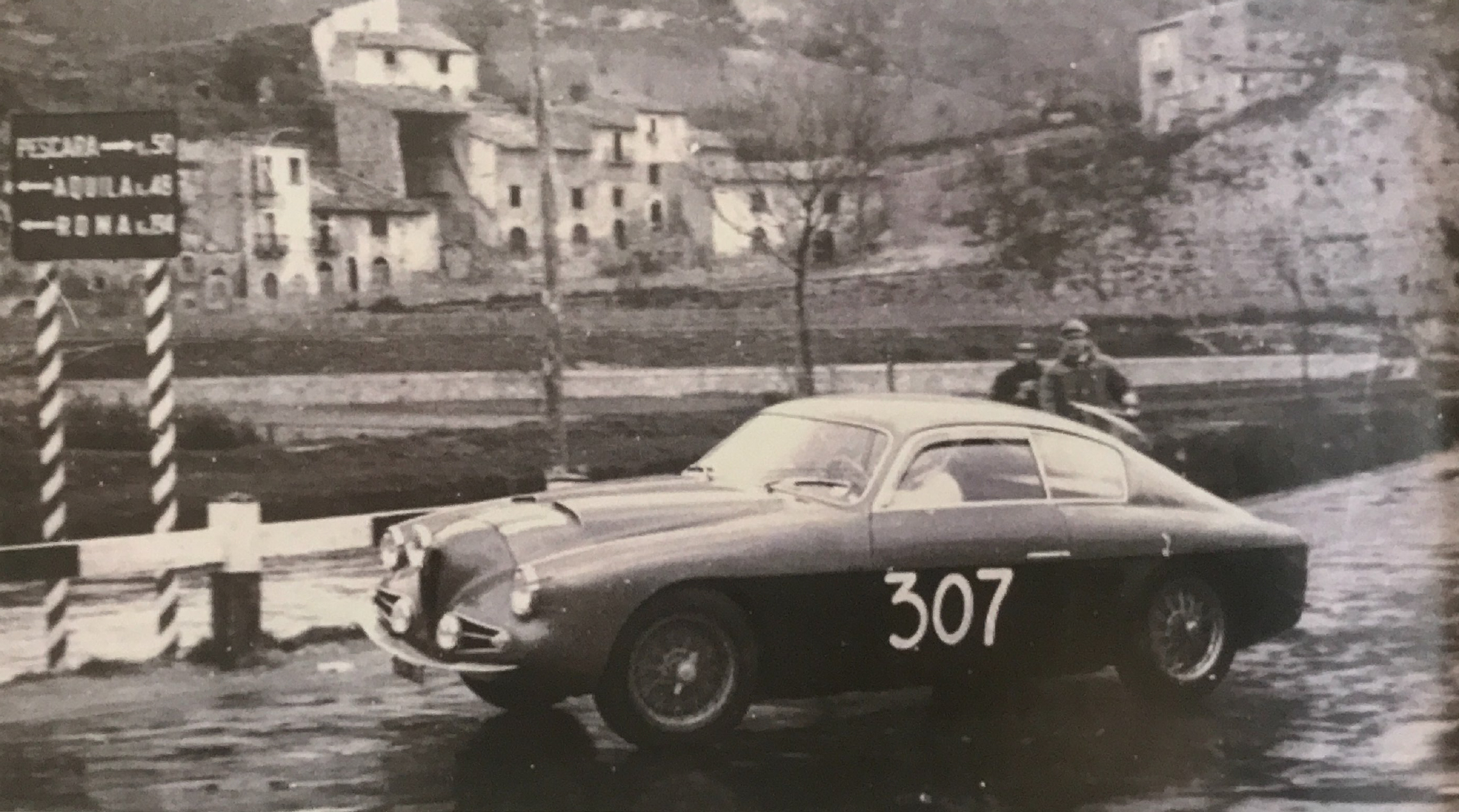
History of #01955
This handsome Alfa, chassis number AR1900C*01955, was delivered new March 28th, 1955 to a Dr. Fornasari in Vincenza, Italy. Dr. Fornasari registered the car in late April, in Vencenza, just in time for his son, Luigi, to participate in the 1955 Mille Miglia. At the time of delivery, the car did not have the famous double bubble roof. This was not the first Alfa Romeo Luigi Fornasari had raced, and he was no doubt eager to try out his latest Alfa Romeo purchase in the famous Mille. It was just what the doctor ordered – Fornasari and his co-pilot, G. Fortano, racing with number 415 painted on the doors, finished with a very respectable 11th in class and 38th overall in a highly competitive field that featured such racing luminaries as Juan Manuel Fangio, Luigi Olivari and Sir Stirling Moss. (Now that’s a thorough test-drive!)
Later in the year, Fornasari entered the 1955 Bolzano-Mendola race running number 188 where he finished 3rd in class and 11thoverall. Next, he ran the Aosta-Gran San Bernardo, earning a 1st in the 2000-cc class and again placing 11th overall. Lastly, he drove his Alfa in the Stella Alpina, finishing 2nd in the 2000-cc class and finishing 5th overall. Additionally, the car was entered in the June 2, 1955, Orbassano 6-hour race as car number 32, but there are no records as to how he finished this race.
Even though Fornasari enjoyed a successful 1955 racing season with the Alfa, he shifted gears the following year when he purchased a new double-bubble Zagato bodied Maserati A6G (thought by some to be chassis number 2150). Unfortunately, Fornasari badly crashed the AG6 during the 1956 Mille Miglia. Interestingly, the car reappeared in 1958 fully repaired and without the double-bubble roof. Meanwhile, the Alfa was sold. The car surfaced again in California in the Spring of 1959, this time wearing a double bubble roof. It was advertised in a sports car publication by Bob Peter Potter’s Grand Prix Motors, located at 500 East 12th Street in Oakland. The advertisement read:
“Built for the 1955 Mille Miglia Races and has been rebuilt at the factory before entering the U.S.A. This machine with its 5-speed gear box and chrome wire wheels is in concours shape throughout and is offered for sale at less than half of the original selling price.” The asking price was $4495.00.
It can be assumed that during this period as the ad says “rebuilt at the factory”, is when it was fitted with a new double roof section.
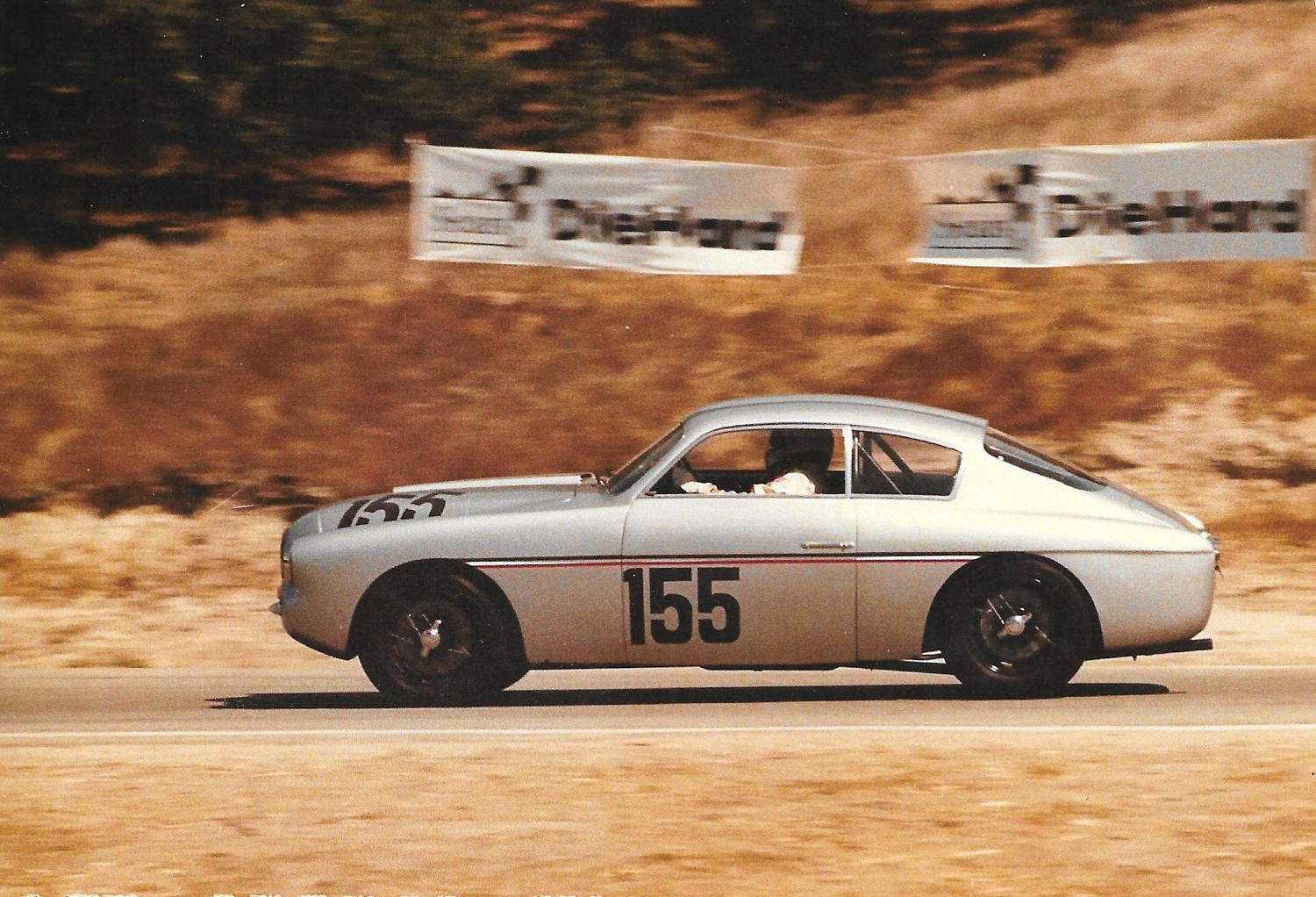
The history of this car is unknown during the 1960s, but its trail picks up again a decade later when the ownership paper-trail shows it being owned by a handful of San Francisco Bay Area people before being acquired by Jim Cesari of Palo Alto in the 1970s. Cesari restored the car and often raced with CSRG and HMSA in California, both at Sears Point and Laguna Seca. He raced many times with Martin Swig who drove a similar 1955 Alfa Romeo 1900C SS Zagato (chassis no.02060) during this period. In the early 1980s, Cesari advertised the car in Coast Car Collector before selling it to Ugo Piccagli in Texas. Piccagli brought the car back to Italy, participating in the 1986 Targo Florio and the 1987 Mille Miglia. At some point it made its way to Switzerland where it acquired the oval “CH” decal it still wears today before returning to California. Since the 1990s it has been in the Blackhawk Collection and has been periodically exhibited at the Blackhawk Museum in California.
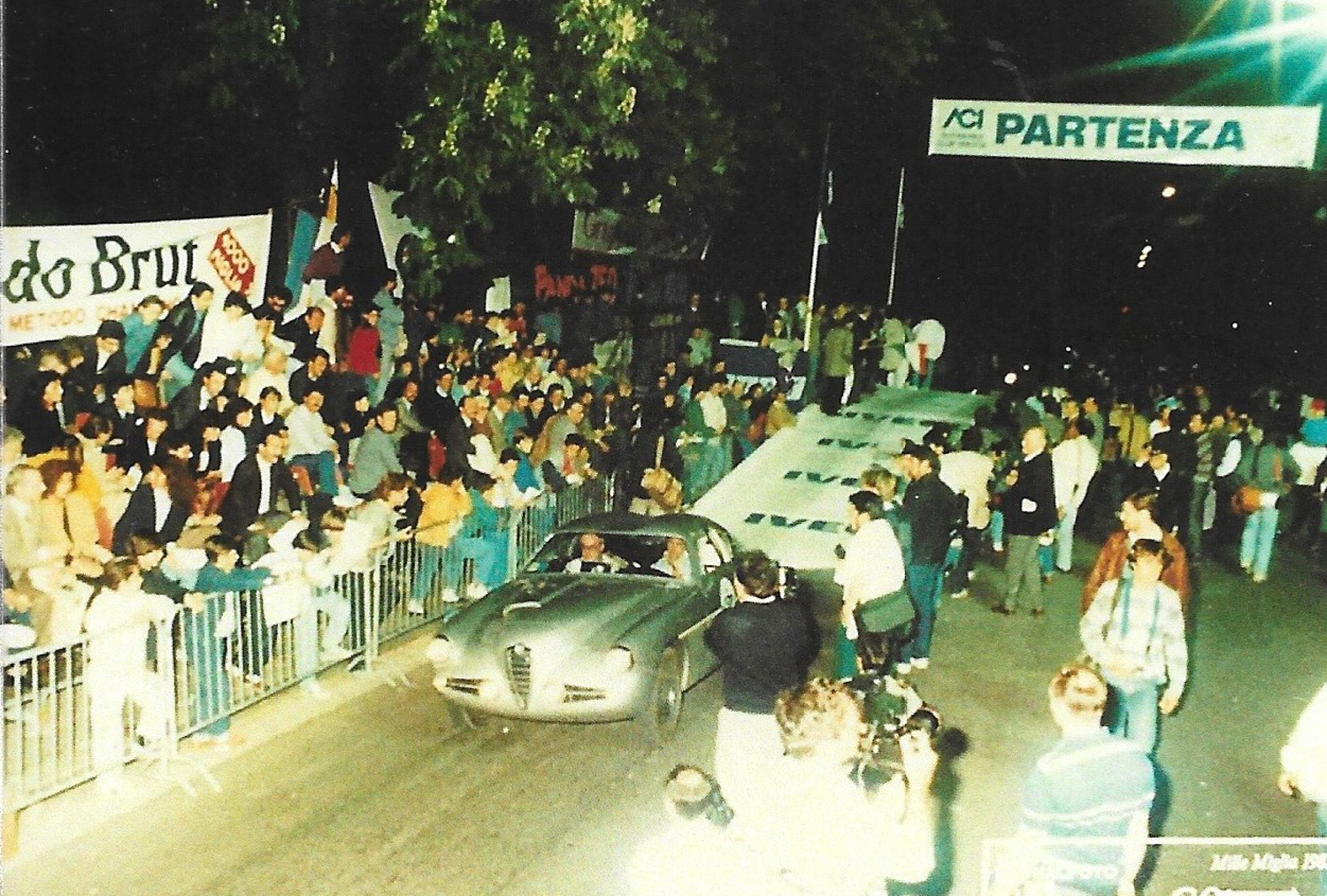
Driving Impressions
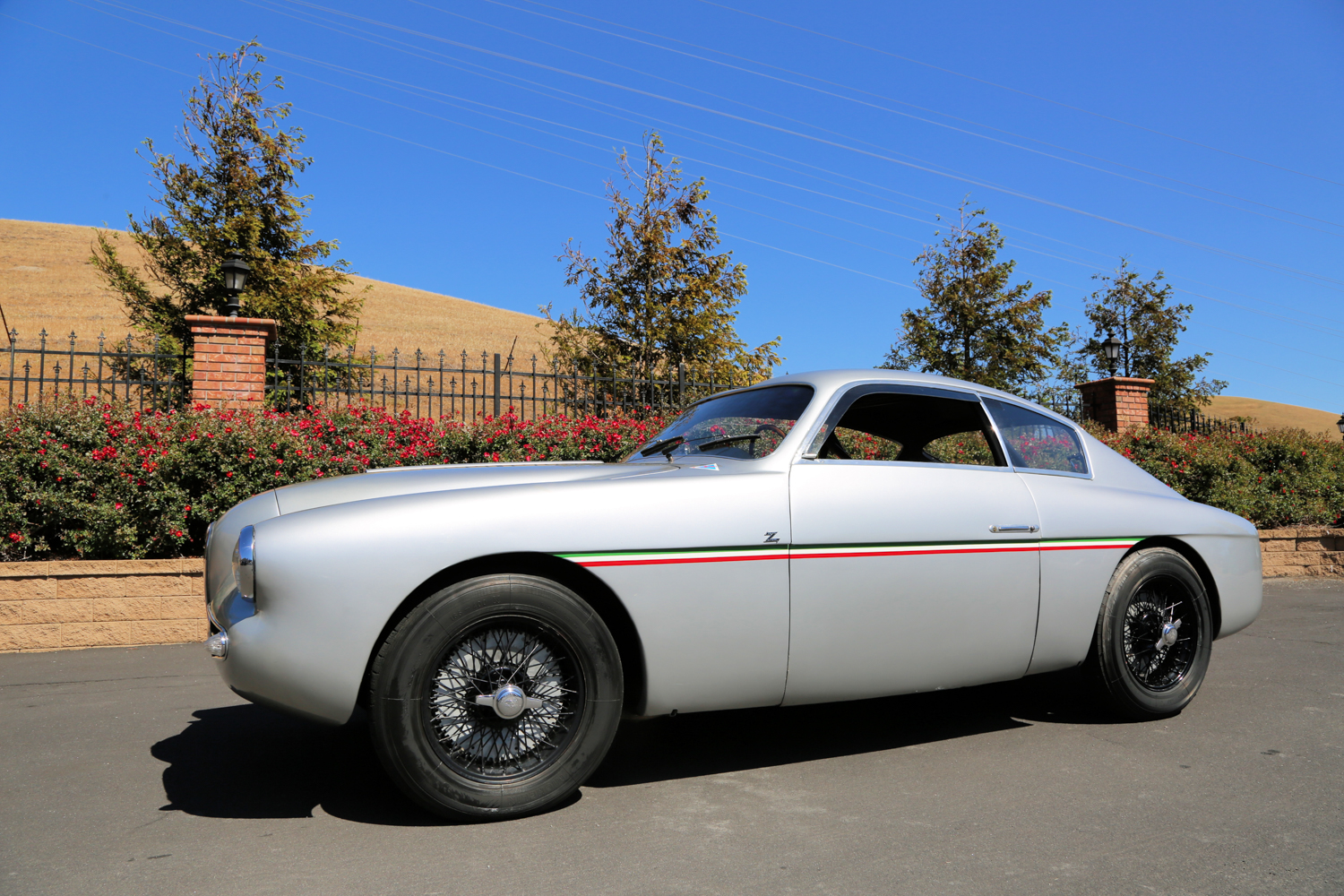
The opportunity to drive an Alfa Romeo 1900 Zagato was exciting. I have driven many exotic 1950s era vintage sports cars before, but there is something about this Alfa Zagato that is most intriguing. Perhaps it is the sensuous, curvy body shape, the car’s race history, or its rarity, but the combination of these elements makes this one special. Just the thought of operating a car that was in the 1955 Mille Miglia was thrilling to me. Pushing the flip-up door handle to open the door I noticed how super-light, or supperleggeri it was. Close examination reveals the thin aluminum doors also contain lightweight plexiglass door and quarter window glass, but are upholstered with map pockets that would come in handy during a long endurance race like the Mille.
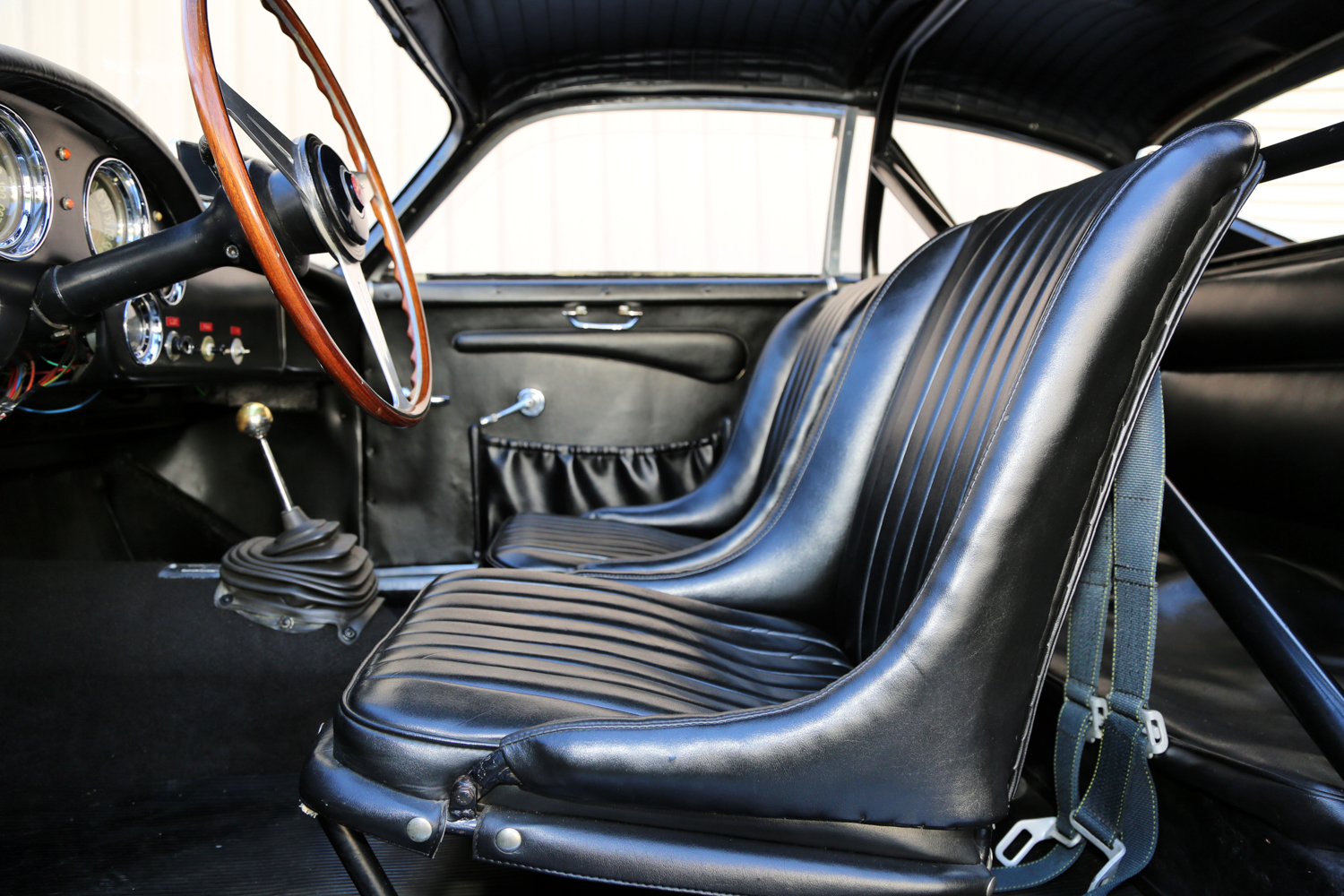
Sitting in the driver’s seat with sturdy side bolsters, it is quite comfortable. The pedals, wood steering wheel and shifter are placed ergonomically well for my 5’ 10” Italian frame. The double bubble roof provides just enough headroom, and would be a close fit if I were wearing a helmet. I can see why it was retrofitted in period with this roof before being shipped to the United States to accommodate a potentially taller American buyer. The interior is all business-like: black with Simpson racing harnesses. No radio, roll bar or cigar lighters here. The gauges are elegant with a faded patina, with the speedo and 6,000 RPM tach up front surrounded by smaller gauges for oil, temp, etc. There is an emergency cable on the left to kill power. Overall, the car has the look of a well-used, but not abused racecar. The restoration is more than 40 years old and has aged gracefully.
Hitting the key brings the just under 1900-cc, dual overhead-cam engine to life with a delightful growl emitting through the exhaust. The sound is intoxicating. As I let the clutch out, I noticed it was markedly stiffer than the early-’60s Giulia spiders I have driven, but it still feels great and engages perfectly. The perfectly placed shifter is, as Alfas all seem to be for me, an absolute pleasure to operate. The 5th gear in this car makes it even better at speed. The dual Solex carbs are spot-on and the engine loves to rev. Power is always available with the right selection of gears. The steering feels quite nimble, with great road-feel. It corners well and you always know where you are. (This is an expensive car, not owned by me, so there were justifiable limits as to just how far I could go). It was very enjoyable to drive, but I could not help thinking what it would be like to spend four days driving like mad through the Italian countryside in this small aluminum machine, hearing the motor and feeling the heat for hours at a time….. Answer – awesome!
https://youtu.be/R3mcM7R8rIg
My test drive was all too brief. It is one of those cars that begs to be driven, and I had fallen victim to its spell. After parking it, I still could not walk away, making several laps around it just to stare at its captivating coachwork. With each step, a different body curve is revealed, each more interesting than the next. The design is brilliant, beautiful and exciting. Una bella macchina.
Steeped in a rich competition legacy, and exquisitely hand-fashioned by one of Italy’s most esteemed carrozzerias, the 1900C SSZ is now a favorite of heavyweight collectors and connoisseurs of rare Italian sports cars, often gracing the lawn of premium concours d’elegance and vintage racing events worldwide.
